LGPRO AWARDS FOR EXCELLENCE

AWARDS PRESENTED BY: PROUD SPONSOR







AWARDS PRESENTED BY: PROUD SPONSOR








It’s an absolute pleasure to introduce the winners and finalists of this year's Awards for Excellence – each one is truly deserving of recognition.
This yearbook is a celebration of the hard work and innovation that sits behind our sector – and importantly, the people who drive it forward.
At the heart of these awards is a simple but powerful mission: to uplift and showcase best practice in our sector. We’re not just celebrating our achievements in these pages, but actively promoting the incredible work you and your peers are doing both within our community of professionals and the communities we serve. By sharing this work, we hope to spur you and your teams to keep striving for excellence.
These awards aren’t just a spotlight on our high achievers; they’re a beacon for us all. The case studies in this yearbook point to some of the best work of the year and act as a form of knowledge sharing. I encourage you to reach out to the teams behind the projects you see to find out how you can bring their learnings to your council.
I want to extend my thanks to everyone who made these awards possible. A special acknowledgment goes to our volunteer judges who took on the formidable task of selecting winners from an outstanding pool of nominees – never an easy job! I’m privileged to have taken part here and to have seen some of the amazing work on display through the judging process. I also want to thank the council leaders who have supported this program, ensuring their teams could take part and contribute to this sector-wide celebration of excellence.
On behalf of the LGPro Board, congratulations to every finalist, high commendation, and winner. And to the graduates of our leadership programs who are recognised at the end of this yearbook, your dedication speaks volumes about your commitment to professionalism and continuous growth.
I encourage every reader to dig a little deeper into the programs and projects they read about here and tap on a few shoulders to bring these ideas into their own organisations where they can make a real impact. When we learn from each other and build on the collective expertise of this incredible professional community, we strengthen the Local Government sector and, most importantly, better serve the communities that rely on us.
Sue Wilkinson President, LGPro

First Nations Community Partnership
Nicole Columbine Knox City Council
Pauline Gordon Campaspe Shire Council
Darren Fuzzard Mount Alexander Shire Council
Nick Grant-Collins Bass Coast Shire Council
Zali Mifsud Banyule City Council
Community Assets and Infrastructure:
Projects under $5 million
Jenni Walker Queenscliffe Borough Council
Chelsea Cooper Baw Baw Shire Council
Brent McAlister Northern Grampians Shire Council
Dale Dickson Stonnington City Council
Community Assets and Infrastructure:
Projects $5 million – $20 million with a population of under 50,000
Renae Littlejohn Mornington Peninsula Shire
Jen Bednar Casey City Council
Chris Leivers Brimbank City Council
Elizabeth Johnston Macedon Ranges Shire Council
Community Assets and Infrastructure:
Projects $5 million – $20 million with a population of over 50,000
Tammi Rose Yarra Ranges Council
Jeevan Pinto Northern Grampians Shire Council
Amanda Wilson Gannawarra Shire Council
David Fice Greater Dandenong City Council
Community Assets and Infrastructure:
Projects over $20 million
Ram Upadhyaya Hindmarsh Shire Council
Cathy Henderson Merri-bek City Council
Simon Fishlock Hepburn Shire Council
Portia Branton East Gippsland Shire Council
Community Partnerships
Tanya Scicluna Mornington Peninsula Shire Council
Kate Lemon Campaspe Shire Council
Robert Kisgen Melbourne City Council
James Rouse Latrobe City Council
Digital and Technology
Jane Carter Mansfield Shire Council
Jodie McNamara Moyne Shire Council
Simon Dean South Gippsland Shire Council
Phil Cantillon Frankston City Council
Disaster Readiness and Recovery
Amey Rountree Monash City Council
Sam Hattam Hepburn Shire Council
Scott Williams Moira Shire Council
Katerina Antoniou Kingston City Council

Diversity and Inclusion
Sayraphim Lothian Ballarat City Council
Cara Rose Brimbank City Council
Sally Rice Indigo Shire Council
Troy Edwards Greater Geelong City Council
Environmental Sustainability
Allison Beckwith Banyule City Council
Rebecca Stockfield Macedon Ranges Shire Council
James Nolan Greater Shepparton City Council
Prudance Liddy Corangamite Shire Council
Innovative Leadership
Kelly Grigsby Municipal Association of Victoria
Sally Schimleck Greater Bendigo City Council
Phil Josipovic Golden Plains Shire Council
Alex Leamy Glen Eira City Council
Service Delivery
Livia Bonazzi Murrindindi Shire Council
Sally Jones Central Goldfields Shire Council
Marcus Goonan Wangaratta Rural City Council
Adam Cummings Boroondara City Council
Special Projects
Sue Wilkinson Yarra City Council
Rebecca Botheras Yarriambiack Shire Council
Tony Peterson South Gippsland Shire Council
Anthony Duffin Swan Hill Rural City Council
Outstanding Small Rural Council
Monica Revell Hindmarsh Shire Council
Liana Thompson Wyndham City Council
Reece Carroll Loddon Shire Council
Chris Carroll Port Phillip City Council
Young Achiever
Maddi Cooper Banyule City Council
Emma Appleton Whittlesea City Council
Trevor Ierino Indigo Shire Council
Paul Marsden Kingston City Council

First Nations Community Partnership
WINNER
• Central Goldfields Shire Council
Truth Telling, Healing and Creating for Community on Djaara Country
HIGH COMMENDATION
• Ballarat City Council
Ballarat Community Survival Day Dawn Ceremony
FINALISTS
• Greater Bendigo City Council
DJAARA – City of Greater Bendigo Yilingga Marna Agreement
• Yarra Ranges Council
Our Country, Our Way – Embedding Indigenous Perspectives in Land and Emergency Management
Community Assets and Infrastructure: Projects under $5 million
WINNER
• Mount Alexander Shire Council
Norwood Hill Recreation Reserve Playground and Youth Space
HIGH COMMENDATION
• Nillumbik Shire Council
Nillumbik Youth Hub
Community Assets and Infrastructure: Projects $5 million – $20 million with a population of under 50,000
WINNER
• Hepburn Shire Council
Djuwang Baring – Creswick Trails
FINALISTS
• Bass Coast Shire Council
Mahers Landing Boat Ramp and Jetty Facility
• Moorabool Shire Council
MARC Stadium
Community Assets and Infrastructure: Projects $5 million – $20 million with a population of over 50,000
WINNER
• Mitchell Shire Council
Seymour Resource Recovery Centre
HIGH COMMENDATION
• Mildura Rural City Council
Mildura Powerhouse Place
FINALIST
• Wyndham City Council
Truganina Community Centre

Community Assets and Infrastructure: Projects over $20 million
WINNER
• Glen Eira City Council
Carnegie Memorial Swimming Pool Redevelopment
FINALIST
• Maribyrnong City Council
Civic Precinct and Community Hub Project
Community Partnerships
WINNER
• Ballarat City Council
Live4Life Ballarat
HIGH COMMENDATION
• Murrindindi Shire Council Flood Recovery
FINALISTS
• Moorabool Shire Council
Hide and Seek Festival
• Greater Dandenong City Council
#Filtered, The Body Image Project
Digital and Technology
WINNER
• Gannawarra Shire Council Transforming the Gannawarra's Digital Presence
HIGH COMMENDATION
• Boroondara City Council Bookable Space Initiative
FINALIST
• Port Phillip City Council Parking CX Improvement
Disaster Readiness and Recovery
WINNER
• East Gippsland Shire Council Strengthened Disaster Readiness and Resilience East Gippsland
HIGH COMMENDATION
• Latrobe City Council City Presentation Emergency Management Response
FINALIST
• Gannawarra Shire Council The Gannawarra's Community Flood Recovery

Diversity and Inclusion
WINNER
• Mildura Rural City Council
Gendering in a New Era in Mildura Sports
HIGH COMMENDATION
• Northern Grampians Shire Council
Remembering Stella Young Project
FINALIST
• Ballarat City Council
My Accessibility Review
Environmental Sustainability
WINNER
• Yarra Ranges Council Yarra Ranges Biochar Facility
HIGH COMMENDATION
• Nillumbik Shire Council
Saving the Charming Spider-orchid
FINALISTS
• Bayside City Council
Library of Things
• Greater Geelong City Council
Organic Waste to Organic Veggies
• Yarra City Council
Business Renewables Buying Group
Innovative Leadership
WINNER
• Boroondara City Council Innovation Academy
HIGH COMMENDATIONS
• Maribyrnong City Council Creative Spaces
• Bass Coast Shire Council Beach Safety: Innovation and Collaboration in Bass Coast
Service Delivery
WINNER
• Banyule City Council
CX Data Driven Transformation Initiative
HIGH COMMENDATION
• Maribyrnong City Council, Moonee Valley City Council, Hobsons Bay City Council, Merri-bek City Council, Yarra City Council, Wyndham City Council, Brimbank City Council, Glen Eira City Council, Stonnington City Council and Mornington Peninsula Shire Council
My Smart Garden
FINALISTS
• East Gippsland Shire Council
Mobile Service Initiative
• Maribyrnong City Council Business Elevate Program
• Moyne Shire Council and Corangamite Shire Council
Shared Service Library Model

WINNER
• Greater Shepparton City Council Talk Talk Play! Program
HIGH COMMENDATIONS
• Kingston City Council Playground Inspectors Program
• Banyule City Council 1,000 Jobs for Banyule
WINNER
• Hepburn Shire Council Djuwang Baring – Creswick Trails
HIGH COMMENDATION
• Central Goldfields Shire Council
Truth Telling, Healing and Creating for Community on Djaara Country
FINALIST
• Murrindindi Shire Council Flood Recovery
WINNER
• Samantha Johns Baw Baw Shire Council
HIGH COMMENDATIONS
• Declan Napier Greater Shepparton City Council
• Ezekiel Dobelsky Glen Eira City Council
FINALISTS
• Lisa Morrison Glen Eira City Council
• Kiara Noonan Macedon Ranges Shire Council
• Irshad Ghazi Casey City Council
• Dylan Taylor Gannawarra Shire Council

This award is for an initiative or program implemented in conjunction with the First Nations community that has contributed towards enriching a community or municipality, delivered through an effective or innovative approach that goes beyond what the organisation has previously done. This could include, but is not limited to, initiatives in:
– Professional development and education (both from a Council officer perspective and/or the First Nations community)
– Business and economic development
• Clear description of approach adopted
• Originality or effectiveness of the initiative
– Leadership in the community
– Recreation and events
– Governance and decision making
– Environment and sustainability
• Evidence demonstrating how the successful approach was adopted
• Extent of giving First Nations communities a meaningful voice in decision-making
• Evidence of courageous leadership in the face of opposition or adversity
• Transferability of the approach
• Clarity of outcomes within the organisation and the community/municipality
• Benefits to the organisation, Indigenous community, and the broader community/municipality

• Central Goldfields Shire Council
Truth Telling, Healing and Creating for Community on Djaara Country
• Ballarat City Council
Ballarat Community Survival Day Dawn Ceremony
• Greater Bendigo City Council
DJAARA – City of Greater Bendigo Yilingga Marna Agreement
• Yarra Ranges Council
Our Country, Our Way – Embedding Indigenous Perspectives in Land and Emergency Management

In a region proud of its goldrush heritage but with limited engagement with Traditional Owners, Central Goldfields Shire Council partnered with DJAARA (Dja Dja Wurrung Clans Aboriginal Corporation) and their enterprise DJANDAK to deliver two transformative projects: the “garingalang gatjin wii” healing garden and the “Welcome Stranger” truth-telling animation. These initiatives have reshaped public spaces and community understanding, laying the foundation for Council’s first Reconciliation Action Plan and a deeper, ongoing partnership with Traditional Owners. Over 17,000 staff, volunteers, community members and visitors have engaged with the garden or viewed the animation.
The healing garden, meaning “water and fire garden,” was envisioned by Djaara Elder Aunty Marilyne Nicholls as a place of healing and learning for all. Located beside the Central Goldfields Art Gallery, the once-neglected carpark has been transformed into a vibrant cultural space through the leadership of the Djaara Wartaka group of Elders and artists.
The garden has become a culturally safe space for Djaara community and a transformative experience for non-First Nations visitors. It was featured in the 2024 Venice Biennale’s Australian Pavilion and will form part of a broader wellbeing corridor aligned with the new Maryborough hospital development.
The “Welcome Stranger” animation, originally focused on the goldrush, was reimagined to include a Djaara truth-telling narrative, acknowledging the impact of colonisation on People and Country.
DJAARA CEO Rodney Carter described it as “the best example I’ve seen of storytelling that combines First Nations and colonial perspectives.” The project has built trust, partnerships, and collaboration across Council, with all departments invited to learn about Djaara People, Culture and Country.
These initiatives exemplify how truth-telling, creativity, and cultural respect can drive reconciliation. They have shifted community attitudes, strengthened inter-organisational partnerships, and established a replicable model for local government-led cultural transformation.

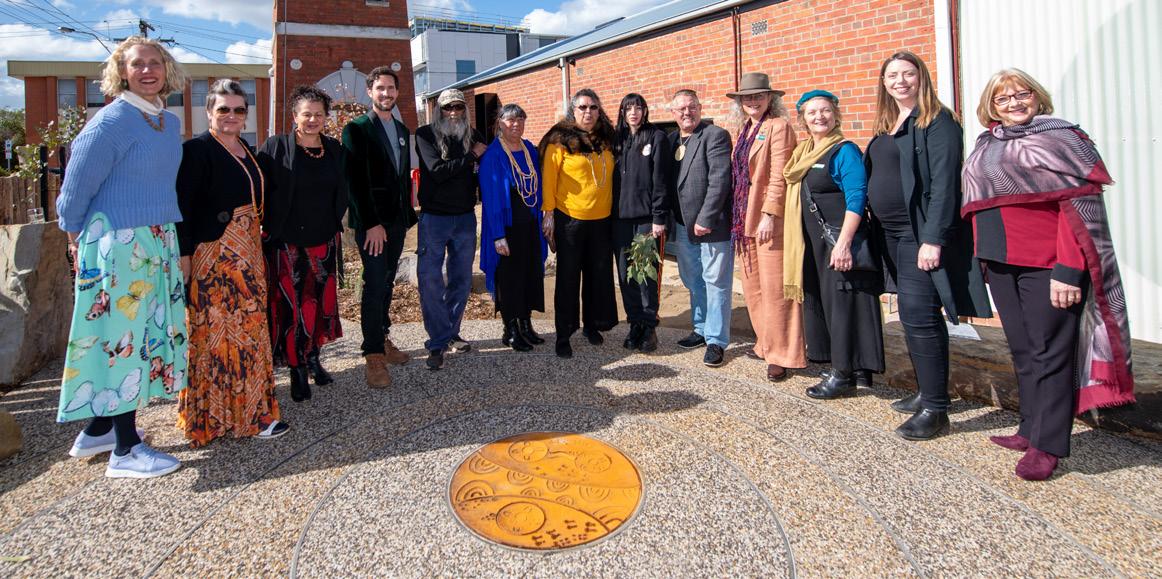


The City of Ballarat’s Survival Day Dawn Ceremony is a powerful, community-led event that honours the resilience of Aboriginal and Torres Strait Islander peoples. Initiated through Council’s Reconciliation Action Plan and guided by the Koorie Engagement Action Group (KEAG), the event has grown since 2020 into a significant cultural gathering. Held annually on 26 January, it provides a culturally safe space for truth-telling, mourning, reflection, and healing. The 2025 ceremony welcomed over 1,300 attendees and featured representation from more than 26 Aboriginal nations, with performances, speakers, and ceremonies led by Traditional Owners, Stolen Generations descendants, and local Elders.
The event is guided by Wadawurrung traditions and begins with a Welcome and Smoking tarnuk, centring attendees in connection with Dja (place). Through dance, song, and storytelling, the ceremony acknowledges the impacts of colonisation and celebrates the survival of the world’s oldest living cultures. The 2025 event included cultural workshops for children and kin-care families, strengthening intergenerational connection and pride.
Eleven children and their grandparents participated in artefactmaking and cultural expression, showcasing their work during the ceremony. These activities reflect Council’s commitment to cultural safety, wellbeing, and community healing.
The event’s success is rooted in strong partnerships with First Nations stakeholders, local Aboriginal businesses, and ally networks. Council supported First Nations-identifying staff to participate in planning and delivery, enhancing cultural safety and embedding inclusive practices across the organisation. The ceremony has become a model for inclusive, community-driven reconciliation, with outcomes that include strengthened relationships, increased cultural awareness, and psychosocial safety improvements in Council’s risk frameworks.
The Survival Day Dawn Ceremony exemplifies how local government can lead with cultural respect, truth-telling, and collaboration. It continues to transform community understanding, honour First Peoples’ self-determination, and foster a shared path forward grounded in healing, connection, and pride.
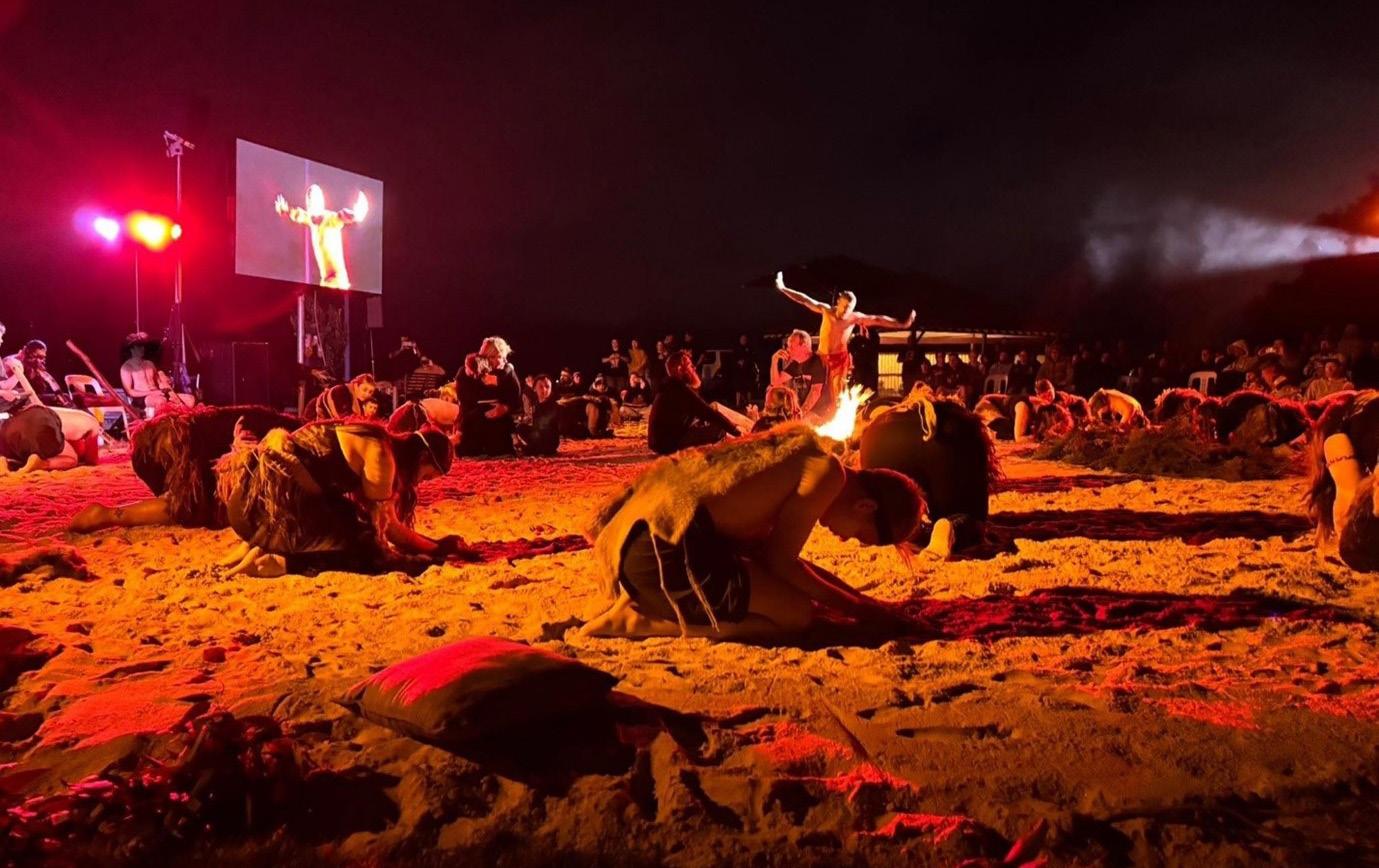

In 2022, the City of Greater Bendigo and the Dja Dja Wurrung Clans Aboriginal Corporation (DJAARA) entered into the Yilingga Marna Agreement (YMA) – meaning “to shake hands” – marking an historic milestone in local government and Traditional Owner collaboration. Building on DJAARA’s legal rights under the 2013 Recognition and Settlement Agreement (RSA), the YMA provides a practical framework for Council-led projects to deliver on Djaara entitlements while benefiting the broader community.
It streamlines the Land Use Activity Agreement (LUAA) compensation process, offering both financial and non-financial outcomes such as cultural heritage recognition, language use, and environmental restoration.

The YMA has deepened the DJAARA-Council partnership through open dialogue, shared problem-solving, and increased staff understanding. It has enabled Council to deliver quality, affordable assets and services while embedding Djaara culture into the landscape through interpretive signage, language, and biodiversity initiatives. The agreement has already supported three major projects and is a replicable model for other councils navigating Traditional Owner partnerships.
By promoting healing of Country, People, water, and climate, the YMA strengthens self-determination and community connection, while ensuring Council meets its legal obligations under the RSA. It represents a transformative step toward reconciliation and shared planning for a more inclusive future.



YARRA RANGES COUNCIL
Recognising the need to embed cultural capability within emergency and land management, Yarra Ranges Shire partnered with Aboriginal Trauma Informed Practitioner Ash Dargan to deliver a series of deep cultural learning workshops. These sessions introduced traditional practices and trauma-informed approaches to council teams and later expanded to include emergency services and government agencies. The initiative culminated in the landmark ‘Our Country, Our Way National Symposium’ in April 2024 – the first Indigenous-led event of its kind.
With over 220 participants from more than 20 organisations, the symposium showcased Aboriginal perspectives on disaster response, cultural safety, and land management, creating a culturally safe space for shared learning and storytelling.
The initiative aimed to elevate Aboriginal voices and embed Indigenous knowledge systems into the core of environmental and emergency planning. By fostering cultural literacy and understanding of intergenerational trauma, the program strengthened cross-sector partnerships and advanced reconciliation.
Evaluation data confirmed the value of Aboriginal-led approaches in addressing climate resilience and disaster recovery. The symposium also energised the council’s Cultural Burning Program, leading to the first Aboriginal-led cultural burn on council-managed land. This initiative demonstrates how local government can lead systemic change by centring Indigenous knowledge and self-determination in building resilient, inclusive, and sustainable communities.
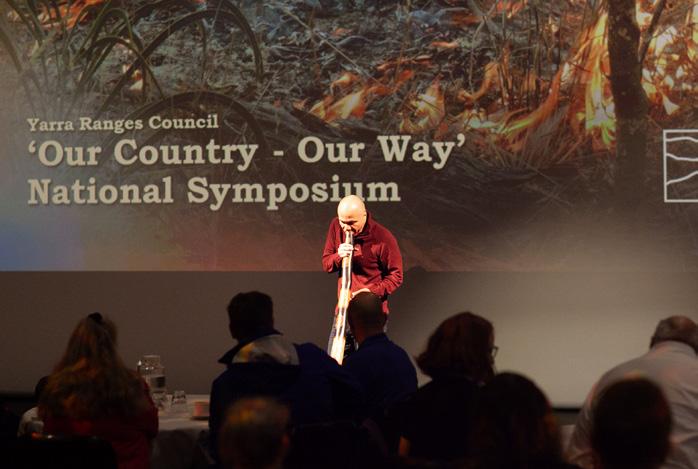



Initiatives that maximise benefits to the community and showcase partnerships in developing and managing community assets. This section is for projects that cost under $5 million and that are new and a one-off activity of a capital nature.
• Clarity of the initiative’s outcomes
• Innovative features
• Demonstrated leadership
• Cost benefits
• Size and complexity of initiative relative to funding and resources
• Transferability/key learnings
• Demonstration of sustainability

• Mount Alexander Shire Council
Norwood Hill Recreation Reserve Playground and Youth Space
• Nillumbik Shire Council
Nillumbik Youth Hub

MOUNT ALEXANDER SHIRE COUNCIL
The transformation of Norwood Hill Reserve in Castlemaine has delivered a vibrant, inclusive community hub in one of the shire’s most disadvantaged areas. Once a disused and neglected park, the reserve now features a new playground, youth space, exercise equipment, and drinking fountains. A standout feature is the tennis hit-up wall adorned with a striking mural by local First Nations artist Daikota Nelson, supported by the council’s Creative Industries Officer. This revitalised space now attracts residents and visitors of all ages and abilities, offering a safe and welcoming environment for recreation and connection.
The project was grounded in deep community engagement, with local residents, young people, and the South Castlemaine Kindergarten playing a central role in shaping the design. Their input led to the inclusion of popular features such as parkour equipment, a basketball hoop, and accessible play elements. The mural, created by Daikota Nelson – who grew up in Norwood Hill alongside her uncle, Djaara Elder Uncle Rick Nelson – adds cultural depth and local pride to the space. The result is a park that reflects the community’s identity and aspirations, while fostering inclusivity and intergenerational use.
Previously underutilised due to outdated infrastructure and limited amenities, the reserve now supports a wide range of informal recreation. New barbeques, sheltered seating, and accessible paths have encouraged families to gather, while the youth space provides a vital outlet for older children and teens. The exercise equipment, thoughtfully positioned for privacy and safety, promotes health and wellbeing in a community where access to formal sport is limited. The park’s popularity has grown rapidly, with increased visitation benefiting nearby businesses and enhancing community cohesion.
This project sets a new benchmark for inclusive public space design in the shire. By delivering a multi-generational, accessible, and culturally resonant space, Council has created a model for future open space planning. With a new modular kindergarten soon to open on-site, Norwood Hill Reserve will continue to serve as a daily destination for families, embedding itself in the fabric of the community for generations to come.

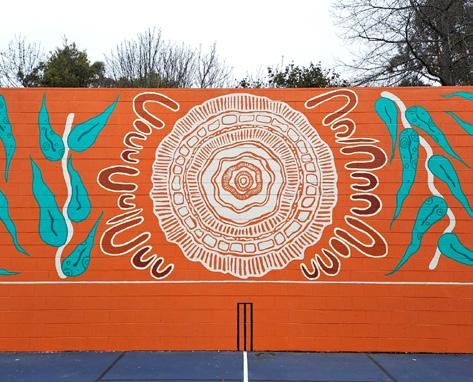
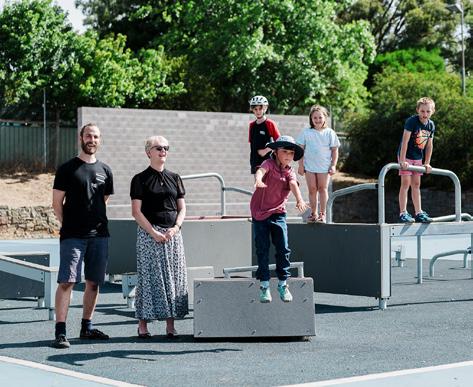


Nillumbik’s first dedicated Youth Hub officially opened its doors in Diamond Creek on 9 September 2024, marking a milestone in youth-focused service delivery for the shire. Jointly funded by Council, the Victorian Government, and the Federal Government’s Local Roads and Infrastructure Program, the $1.16 million project has transformed an underutilised Council facility into a vibrant, inclusive space for young people aged 12-25. The Hub offers study areas, free Wi-Fi, kitchen and laundry facilities, and indoor and outdoor spaces designed to foster social connection, inclusion, and wellbeing.
The project was shaped by extensive consultation with young people and service providers, guided by the Youth Hub Research and Engagement Report and aligned with the Nillumbik Youth Strategy 2022-2026. The Hub responds to a critical need for accessible, youth-friendly services in the region, providing a centralised location for mental health, education, and employment support. Its youth-centred model ensures that young people’s voices and lived experiences are embedded in service design and delivery, creating a space that is both relevant and empowering.
By co-locating services and offering flexible programming, the Hub enables early intervention and wraparound support, reducing the need for more intensive services down the line. The facility’s design promotes equity and accessibility, with consulting rooms, hot desks, and multipurpose spaces that support collaboration between Council, local service organisations, and the community. The adaptive reuse of existing infrastructure also reflects the council’s commitment to sustainability, minimising environmental impact while maximising community benefit.
The Nillumbik Youth Hub exemplifies excellence in local government through its innovative, inclusive, and sustainable approach to youth engagement. It stands as a model of best practice, demonstrating how strategic partnerships, community co-design, and thoughtful infrastructure investment can deliver lasting outcomes. The Hub is already making a tangible difference in the lives of young people and will continue to do so for generations to come.



McArthur is proud to be associated with the 2025 Awards for Excellence and congratulates all finalists and winners. With your talent and dedication, the future of Local Government in Victoria is definitely in safe hands.
For 56 years, McArthur has been committed to delivering the highest levels of service to Local Government across Victoria and Australia-wide.
Like you, we share the same uncompromised commitment to excellence in everything we do including:
• Executive Recr uitment
• Per manent, Temporar y and Contract Recr uitment
• HR/Management Consulting:
– Perfor mance Reviews
– Remuneration Strategies
– Independent External Advisory
– Employee Engagement
– Outplacement Services
– HR Business Support
To find out how we can help you ensure a future fit for your Council and Communities, call the McArthur Local Government team on (03) 9828 6565.



Initiatives that maximise benefits to the community and showcase partnerships in developing and managing community assets. This section is for projects that cost $5 million – $20 million that are new and a one-off activity of a capital nature.
• Clarity of the initiative’s outcomes
• Innovative features
• Demonstrated leadership
• Cost benefits
• Size and complexity of initiative relative to funding and resources
• Transferability/key learnings
• Demonstration of sustainability
• Hepburn Shire Council
Djuwang Baring – Creswick Trails
• Bass Coast Shire Council
Mahers Landing Boat Ramp and Jetty Facility
• Moorabool Shire Council
MARC Stadium

In 2024, Hepburn Shire Council proudly completed Djuwang Baring, a 60km mountain bike trail network across 70 segments in Creswick. Traversing Djaara Country and weaving through State Forests, Regional Parks, and plantation lands, the network offers a world-class riding experience while celebrating the region’s forest ecology, mining heritage, and cultural significance. Years in the making, this landmark project has transformed Creswick into a premier Trails Town, attracting visitors from across Victoria and beyond, and delivering a major boost to local tourism and economic activity.
The project was guided by a vision to create a sustainable, inclusive, and culturally respectful trail network. Developed in close collaboration with Djaara and Djandak, over half the trails are named in the Dja Dja Wurrung language, embedding cultural heritage into the landscape. Expert input from ecologists, arborists, archaeologists, and cultural historians ensured the trails were sensitively sited, with only 130 of the 1,600 permitted trees removed – each relocated on-site. This careful planning preserved ecological integrity while enhancing visitor safety and reducing environmental damage.



Djuwang Baring represents more than a recreational asset – it is a testament to the power of collaboration, careful planning, and community involvement. The project set a new benchmark for trail design by integrating expert knowledge with Traditional Owner insights and community consultation. Its inclusive design, featuring adaptive cycling options and accessible amenities, reinforces the principle that outdoor recreation should be available to all. The Hammon Park trailhead has become a vibrant hub for events and connection, further enhancing Creswick’s appeal.
The trail network’s impact is already evident, with local businesses reporting a 25 per cent increase in revenue and strong visitor feedback. Djuwang Baring stands as an enduring legacy of what can be achieved when diverse groups unite around a shared vision – one that promotes economic vitality, environmental stewardship, cultural heritage, and community wellbeing.


OF UNDER 50,000
The Inverloch Boat Ramp and Jetty Upgrade has delivered a state-ofthe-art, all-tide launching facility that significantly enhances safety, accessibility, and user experience for both locals and visitors. The project includes a new jetty accommodating vessels up to 7.5 metres, formalised carparking with DDA-compliant bays, upgraded public toilets with disability access, and a dedicated boardwalk ramp for windsurfers. Improved lighting across the carpark and jetty enhances safety, while the addition of rigging zones and manoeuvring space supports efficient boat handling.
Designed with sustainability in mind, the facility incorporates solar lighting, a 50,000-litre rainwater tank servicing the toilets and fish cleaning table, and low-maintenance marine structures with a 25-year lifespan.


This initiative has transformed Inverloch’s foreshore into a more inclusive and functional space, boosting tourism and supporting local businesses. The project’s design minimised environmental impact, with no adverse effects on coastal processes, and serves as a model for future coastal infrastructure.
While procurement challenges and user-specific concerns highlighted the importance of broader supplier engagement and inclusive design, the project’s success lies in its collaborative approach and sustainable outcomes. The community has embraced the new facility, which now stands as a valued asset that will serve generations of recreational users and visitors to the region.



Opened in January 2024, MARC Stadium has transformed Bacchus Marsh’s sporting landscape by addressing the region’s growing demand for indoor recreation. Featuring four indoor courts, multipurpose meeting rooms, and fully accessible amenities, the stadium supports a wide range of sports including basketball, netball, futsal, and volleyball.
Designed with universal access and community wellbeing in mind, the facility promotes year-round physical activity, social inclusion, and youth engagement. The stadium also serves as a vital hub for local clubs, easing pressure on existing venues and enabling better scheduling and training opportunities. Its flexible design allows for regional events and competitions, aligning with local and state strategies to support population growth and active lifestyles.
Beyond its social impact, MARC Stadium has delivered significant economic and environmental benefits. The project created 61 full-time equivalent jobs during construction and is expected to support 36 ongoing roles post-completion. Local businesses are already experiencing increased foot traffic from events and tournaments, boosting tourism and regional spending.
Environmentally, the stadium incorporates energy-efficient systems, water-saving technologies, and sustainable materials, exceeding its original sustainability targets. Its flood-resilient design, developed in collaboration with Melbourne Water, ensures long-term viability. MARC Stadium stands as a model of collaborative planning, inclusive design, and sustainable infrastructure, delivering lasting value to the Bacchus Marsh community.

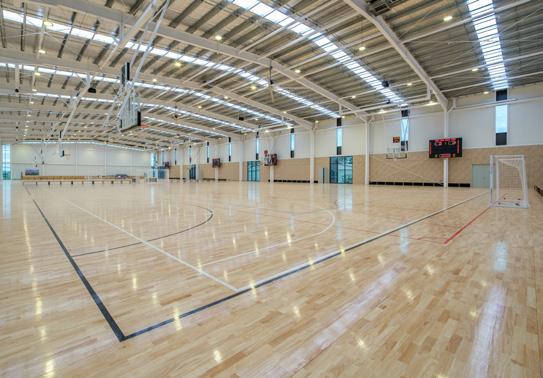


Initiatives that maximise benefits to the community and showcase partnerships in developing and managing community assets. This section is for projects that cost $5 million – $20 million that are new and a one-off activity of a capital nature.
• Clarity of the initiative’s outcomes
• Innovative features
• Demonstrated leadership
• Cost benefits
• Size and complexity of initiative relative to funding and resources
• Transferability/key learnings
• Demonstration of sustainability

• Mitchell Shire Council
Seymour Resource Recovery Centre
• Mildura Rural City Council
Mildura Powerhouse Place
• Wyndham City Council
Truganina Community Centre

PROJECTS $5 MILLION – $20 MILLION WITH A POPULATION OF OVER 50,000
Opened in May 2023, the Seymour Resource Recovery Centre is a state-of-the-art facility designed to meet the growing waste management needs of Mitchell Shire’s expanding population. Located in Hilldene, the centre replaces the former Seymour facility, which was decommissioned to allow for landfill rehabilitation. The new site was developed with a strong focus on better practice principles, sustainability, and customer experience. Featuring a two-level, drive-through layout, the centre offers a streamlined, recycling-first approach to waste disposal, with general waste deposited only at the end of the visit.
The facility was designed with a ‘cradle-to-cradle’ philosophy, supporting a circular economy and integrating education into its operations. A purpose-built Reuse Shop and dedicated education space allow residents and students to learn about recycling, the waste hierarchy, and the importance of sorting waste correctly. The centre also supports Council’s kerbside transition to four waste streams, helping the community understand what goes into each bin and why.

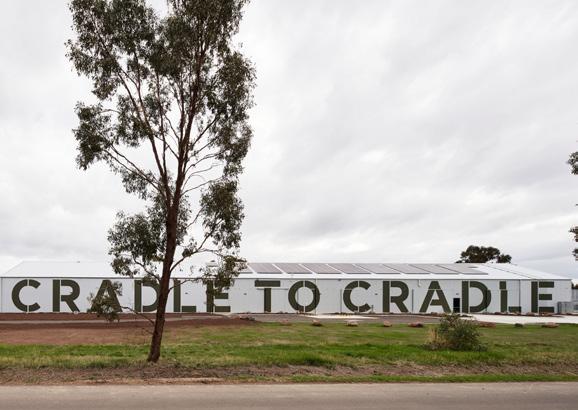
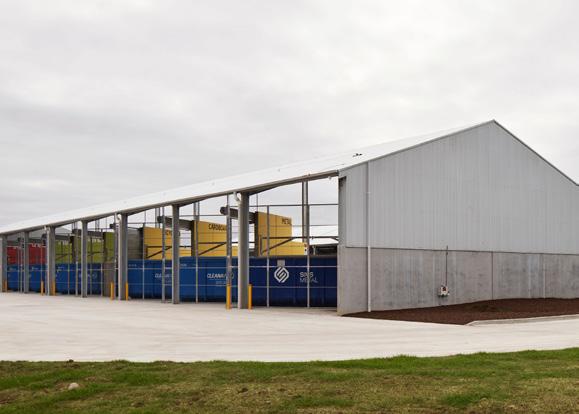
Creative design elements and open-air architecture enhance the visitor experience, challenging outdated perceptions of rural waste facilities as uninviting or unpleasant.
The project team, supported by Council’s ambition to lead in waste innovation, delivered a facility that has raised the bar for local government resource recovery. Despite budget constraints, value engineering led to a more sustainable and engaging design, including a central native garden and improved airflow. The centre has already attracted significant interest from other councils, industry groups, and community organisations, hosting regular tours and workshops.
The Seymour Resource Recovery Centre is a transformative project that demonstrates how infrastructure can support environmental sustainability, community education, and operational excellence. It positions Mitchell Shire as a leader in circular economy practices and provides a scalable model for future waste management facilities across regional Victoria and beyond.


Mildura Powerhouse Place, delivered as part of Mildura Riverfront Stage 2, has transformed the historic Powerhouse building into a vibrant cultural, tourism, and community hub. Featuring flexible event spaces, a village green, enhanced landscaping, and improved pedestrian connections, the precinct links the CBD to the riverfront and has become a dynamic destination for locals and visitors alike. The project was shaped by extensive community engagement and collaboration with stakeholders, including community groups and social enterprises, ensuring alignment with local needs and strategic goals. The result is a revitalised precinct that fosters creativity, commerce, and connection.
The project created 120 construction jobs and 33 ongoing roles, while hosting over 200 uses in its initial operating period. It supports local businesses, including the expansion of a hospitality operator and the establishment of Spark, a new enterprise. A key partnership with the Christie Centre has delivered a visitor inspiration point, providing inclusive employment opportunities for people with disability.
The adaptive reuse of the Powerhouse building preserved local heritage while creating a unique, multi-functional venue that promotes social inclusion and celebrates cultural diversity.
Sustainability was central to the project’s design and delivery. Constructed using hempcrete and recycled materials, the facility is powered by 100 per cent renewable energy through a 39kW solar PV system and 22kWh battery storage. It is the council’s first all-electric facility of its size and has already generated over 28MWh of electricity, significantly reducing its environmental footprint. The precinct’s design prioritises flexible use, pedestrian access, and long-term adaptability, setting a new benchmark for sustainable regional development.
Strong leadership from Mildura Rural City Council, including the CEO, executive team, and Project Control Group, ensured strategic alignment and successful delivery. Through effective project management, stakeholder collaboration, and community consultation, Mildura Powerhouse Place has become a model for inclusive, sustainable, and community-driven infrastructure.



The Truganina Community Centre (TCC) is a landmark facility addressing a critical service gap for over 8,000 residents, with projections to serve more than 10,000 by 2036. Delivered under financial constraints, it integrates essential services including free kindergarten, maternal and child health, youth programs, library services, and community spaces.
It is the council’s first carbon-neutral, fully electric building, designed to reflect First Nations heritage and serve a culturally diverse population. The Centre’s collaborative governance model ensures seamless service delivery, while flexible, multi-use spaces adapt to evolving community needs. Key features include 198 free kindergarten places, 22 daily health consultations, and low-cost access to study areas and community rooms.


Economically, the Centre supports over 19 full-time jobs and enhances workforce participation, particularly for women. Programs such as English classes and resumé writing improve employability, while library lounge services support business development and digital access. Environmentally, the Centre targets a 5-star Green Star rating, incorporating solar power, water-saving systems, sustainable materials, and EV charging stations.
Socially, it fosters inclusion through cultural programming, sensory spaces, and community events. The TCC exemplifies how strategic leadership, inclusive design, and sustainable practices can deliver lasting community value and serve as a model for future community infrastructure.
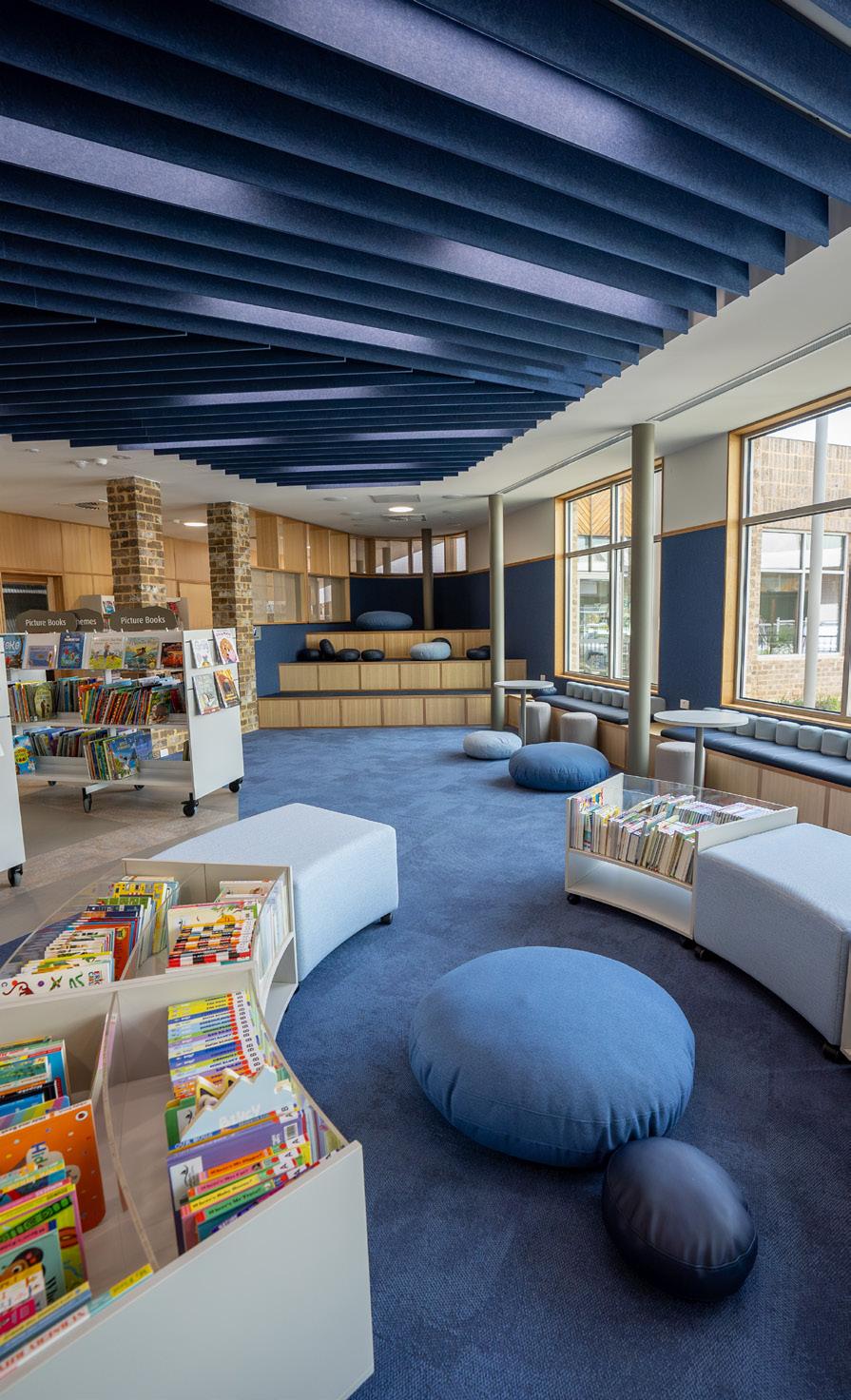


Initiatives that maximise benefits to the community and showcase partnerships in developing and managing community assets. This section is for projects that cost over $20 million that are new and a one-off activity of a capital nature.
• Clarity of the initiative’s outcomes
• Innovative features
• Demonstrated leadership
• Cost benefits
• Size and complexity of initiative relative to funding and resources
• Transferability/key learnings
• Demonstration of sustainability
• Glen Eira City Council
Carnegie Memorial Swimming Pool Redevelopment
• Maribyrnong City Council
Civic Precinct and Community Hub Project

GLEN EIRA CITY COUNCIL
The $75 million redevelopment of the Carnegie Memorial Swimming Pool (CMSP) has transformed a 56-year-old seasonal facility into a world-class, year-round aquatic and leisure destination. The facility now features an outdoor 50m pool with a dividing wall, dive pool, splash pad, learn-to-swim pool with a moveable floor, wellness pool, walk-in spa, program rooms, allied health suites, and a café. Designed with accessibility at its core, it includes ramps in most pools, genderneutral change rooms, and sensory-friendly features. With capacity to accommodate over 2,500 swim students weekly and 2.2 million annual visitors, CMSP is now Victoria’s largest council-operated leisure offering.
The project faced a 12-month delay in 2021 due to a Victorian Heritage Register nomination. Council used this time to finalise detailed plans, secure Federal election funding, and conduct an Expression of Interest process. Despite supply chain disruptions, material shortages, and inflationary pressures, the project progressed through strong governance, led by its Project Control Group and supported by community and industry stakeholders.

Over 200 new jobs were created, and the facility welcomed over 54,000 visits in its first month alone.
Sustainability was central to the project, with CMSP achieving a six-star Green Star Design rating in 2024. The facility is fully electric and powered by renewable energy, with solar panels, rainwater harvesting, and intelligent energy systems. An earth berm insulates the building and supports native landscaping, while sustainable materials and operational policies reduce emissions and environmental impact.
CMSP exemplifies best practice in community infrastructure, overcoming heritage and construction challenges to deliver a climateresilient, inclusive, and high-performing facility. It stands as a thriving community hub and a blueprint for sustainable, accessible aquatic centres across Australia.
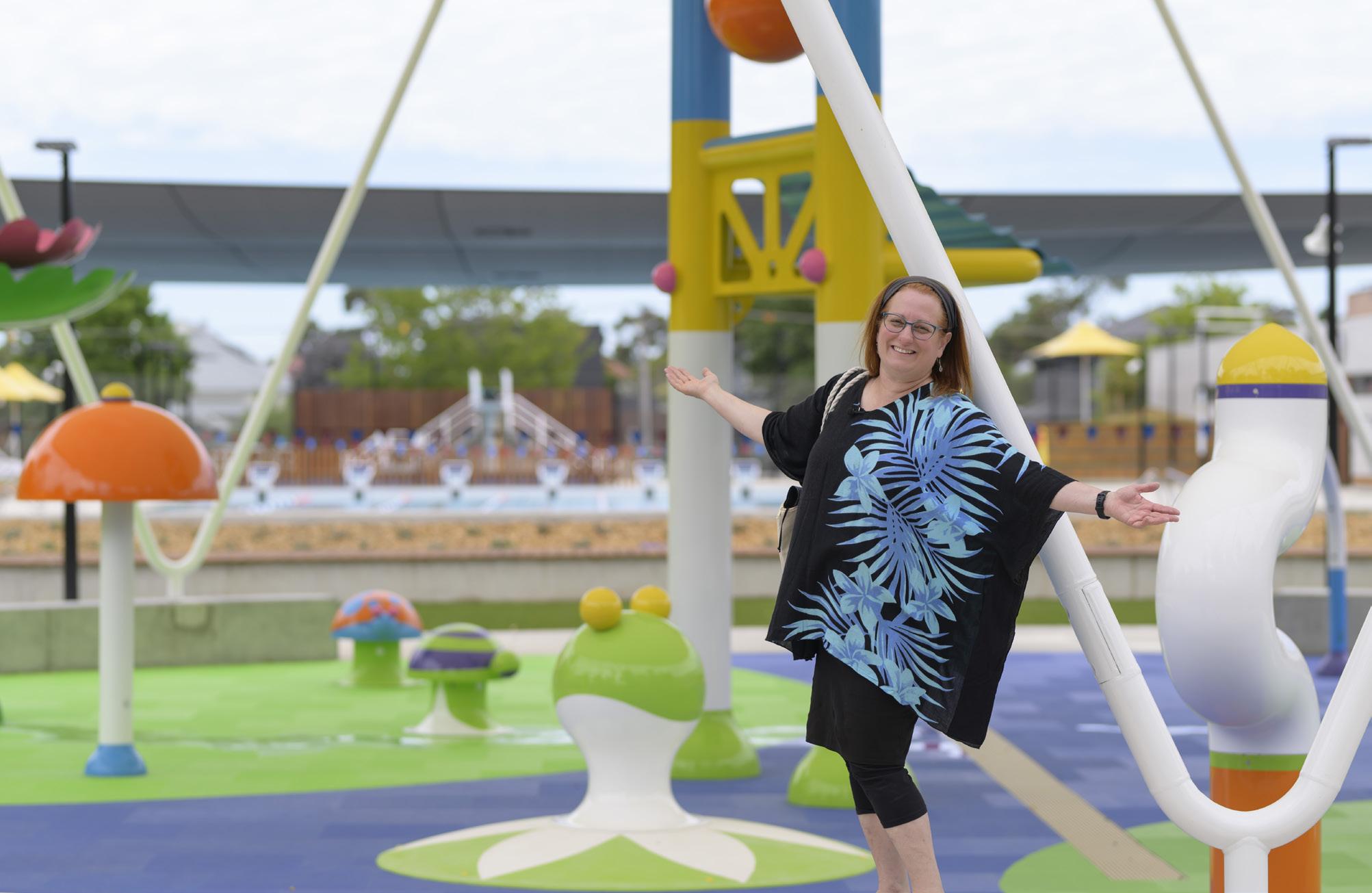

The Maribyrnong Civic Precinct and Community Hub project has transformed the historic Footscray Town Hall into a vibrant, sustainable, and inclusive civic destination. The redevelopment includes a restored heritage Town Hall, a new civic building, and a generous community park, creating a welcoming space for civic services, events, and community connection.
The Town Hall now features accessible amenities, bookable meeting rooms, a multi-faith room, and infant care facilities, while the park offers open lawns, indigenous plantings, and gathering spaces. The project enhances civic presence, improves service delivery, and returns previously administrative-only spaces to the community for events such as International Women’s Day and citizenship ceremonies.

Sustainability was central to the project’s design, with the new civic building on track to achieve a six-star Green Star Design rating. Environmentally responsible materials, a 70kW solar system, rainwater harvesting, and an all-electric thermal plant contribute to a 45 per cent reduction in upfront carbon emissions.
The precinct also includes EV infrastructure, bike parking, and gender-inclusive amenities. Despite delays from a heritage nomination and construction challenges, the project was delivered with strong governance and community input. It now stands as a model of climateresilient, community-focused infrastructure that honours the past while building for the future.
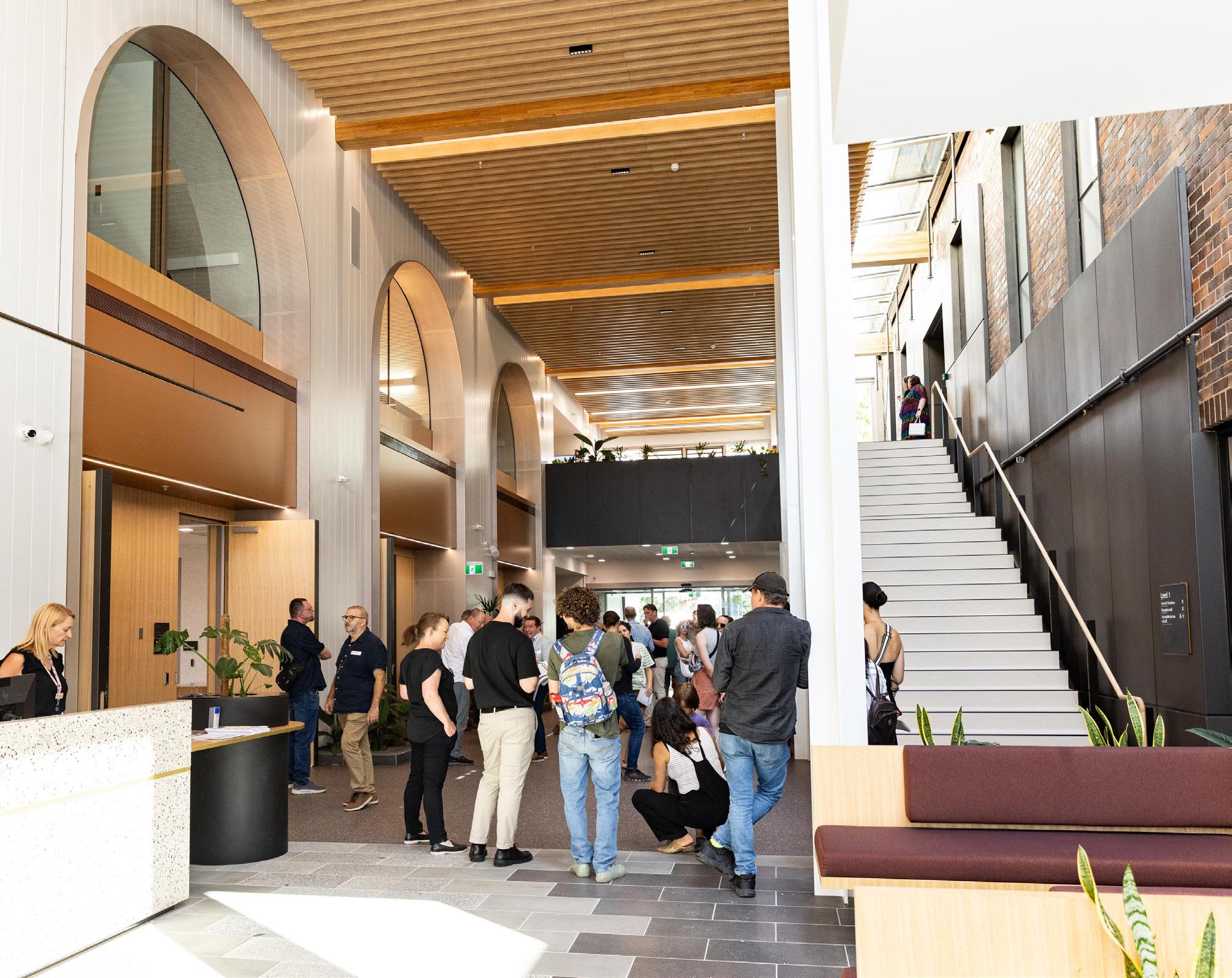


Initiatives that demonstrate a commitment to working with and/or in the community to achieve positive outcomes.
• Clarity of outcomes and impact on the sector and community
• Level of innovation
• Inclusive contribution and gender equality
• Demonstrated leadership
• Effectiveness of collaboration
• Transferability of the initiative
• Size and complexity of initiative relative to funding and resources
• Ballarat City Council
Live4Life Ballarat
• Murrindindi Shire Council
Flood Recovery
• Moorabool Shire Council
Hide and Seek Festival
• Greater Dandenong City Council
#Filtered, The Body Image Project

Live4Life Ballarat is a community-grown, evidence-based initiative that addresses the urgent need for improved youth mental health in regional communities. Established in 2023 in response to rising mental health concerns among young people, the program is a collaborative partnership between Ballarat City Council, 11 secondary schools, and numerous community organisations. It delivers mental health education, peer support training, and community awareness campaigns, equipping young people with the skills and confidence to support their own wellbeing and that of their peers. Since its inception, over 3,500 young people have been trained in Teen Mental Health First Aid (TMHFA), with 66 adults and 32 facilitators also trained.
The program’s strength lies in its whole-of-community approach, integrating schools, families, and local services to create a consistent and supportive environment for youth. The four pillars of the Live4Life model – school and community partnerships, evidencebased education, youth leadership through the ‘Crew,’ and mentoring – ensure a comprehensive and sustainable framework.
In 2024, the program met all its goals, including delivery to Year 8 and 10 students across all participating schools, four Youth Mental Health First Aid sessions, and the establishment of a fundraising subcommittee.
Live4Life Ballarat has significantly increased mental health literacy, reduced stigma, and improved access to support services. Feedback from students, teachers, and parents highlights increased confidence in recognising and responding to mental health challenges. The program has also strengthened connections between young people and local mental health services, promoting early intervention and long-term resilience.
This initiative exemplifies the power of collaboration in addressing complex social issues. By fostering a culture of openness, support, and education, Live4Life Ballarat has created a lasting impact on the wellbeing of young people and serves as a model for proactive, community-led mental health programs across regional Australia.



Following devastating floods in October 2022, the Murrindindi Flood Recovery Plan identified farmers as a high-risk group due to the compounding effects of successive disasters. With seven additional declared disaster events since, the ongoing stress has amplified mental and physical health vulnerabilities.
The Farmers First Wellness Program is a community-led, collaborative initiative launched in October 2023 in response, addressing the growing physical and mental health challenges faced by farmers and rural residents. With over 470 consultations delivered across 19 free health clinics, the program has provided early intervention, clinical referrals, and improved access to allied health services – particularly for farmers who are traditionally reluctant to seek medical help.
Recognising the barriers of distance, time, and stigma, the program brought health services directly to farmers at the Yea Saleyards on sale days – a trusted and familiar setting. This innovative model delivered cardiovascular checks, skin cancer screenings, mental health support, and financial and social service referrals.
While targeted at farmers, the program remained accessible to the broader community, reinforcing inclusivity and community connection. The initiative has normalised proactive health-seeking behaviours and built trust between healthcare providers and rural residents.
The program aligns with Murrindindi Shire Council’s strategic goals of improving access to health and mental health services, enhancing community wellbeing, and supporting disaster recovery. It also supports the business plans of the Yea Saleyards and Yea Hospital, fostering long-term collaboration. The program’s success is a testament to the leadership of women in rural health and agriculture, who led its development and delivery across all partner organisations.
More than a health service, the Farmers First Wellness Program is a transformational, community-driven solution that fosters resilience, reduces health inequalities, and strengthens social cohesion. It has delivered measurable outcomes, reduced pressure on local health systems, and created a replicable model for rural health engagement – proving that when services go to where people are, lives are changed.
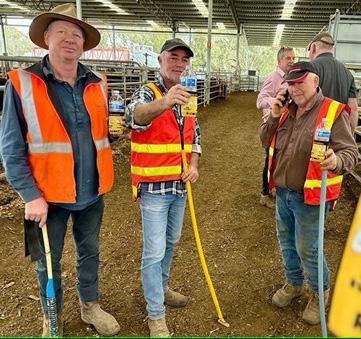



The Hide and Seek Festival (HSF) is a biennial arts and culture event that showcases Moorabool Shire’s townships through music, exhibitions, and art trails. Co-designed with local artists and businesses, HSF delivers micro-festivals that celebrate creativity, foster social connection, and boost local economies. Since its inception in 2022 as “Moorabool Live and Local,” HSF has doubled its attendance to over 4,000 in 2024, engaged more than 300 artists, and partnered with 30 local businesses.
The festival’s Young and Local program has provided over 150 emerging artists with their first professional opportunities, while unique activations such as the Fairy Doors Arts Trail, NAIDOC Week events, and commissioned works by Wadawurrung artist Barry Gilson have enriched the cultural landscape.
HSF operates on a co-investment model, with the council contributing $55,000 and businesses covering 25 per cent of performance costs. This approach ensures financial sustainability and strong community buy-in. Economic data shows significant local impact, with towns like Blackwood and Ballan experiencing up to 50 per cent increases in visitor spending.
The festival’s governance includes internal and external working groups, an open EoI process, and a Gender Impact Assessment to ensure inclusivity. HSF has become a model for regional placemaking, winning awards and influencing the council’s broader cultural strategy.



#Filtered, The Body Image Project, is a youth-led social media campaign developed by Greater Dandenong’s Youth and Family Services (YFS) to address the harmful impact of social media on young people’s body image. Co-designed with Year 8 students from Killester College and supported by the Butterfly Foundation and Chisholm Institute, the campaign ran from November 2023 to December 2024.
It directly engaged over 165 young people and reached more than 15,000 through Instagram and Facebook. The campaign was informed by educational workshops, media training, and a collaborative design process, resulting in a toolkit and campaign materials now used across schools, services, and council platforms.
#Filtered is a legacy project that continues to support media literacy and critical thinking among young people. It has normalised conversations around body image, empowered youth to challenge unrealistic beauty standards, and provided a model for sustainable, community-driven advocacy.
The campaign’s success is reflected in positive feedback from students, parents, and community partners, and its integration into ongoing YFS programming. By placing young people at the centre of the solution, #Filtered exemplifies best practice in youth engagement and demonstrates the council’s commitment to supporting youth-led initiatives that address complex social issues with creativity, empathy, and impact.



This award recognises excellence in innovation and expertise in utilising electronic tools, devices, systems and resources to enhance the work of councils, from generating, storing or processing data to improving engagement and streamlining administrative processes. It celebrates outstanding commitment to leveraging digital solutions for the betterment of communities, fostering efficiency, transparency and inclusivity in governance.
Initiatives can include those that increase safety and responsibility online or those that increase effectiveness of professional messaging and communication online.
• Clarity of objectives and outcomes
• Innovative technological solutions
• User-centric design and the ability to meet specific target group needs
• Impact on citizen engagement
• Collaboration and partnerships
• Extent of leading practice
• Sustainability and transferability

• Gannawarra Shire Council
Transforming the Gannawarra's Digital Presence
• Boroondara City Council
Bookable Space Initiative
• Port Phillip City Council
Parking CX Improvement

In February 2024, Gannawarra Shire Council launched its new-look website, marking the completion of a four-year digital transformation project aimed at improving community access to Council services. Led by Gannawarra’s Communications team and powered by Granicus’ suite of tools, the project was delivered in two stages: first, enhancing online engagement through OpenForms and a new community engagement platform; and second, redesigning the website to improve navigation and accessibility. This transformation was driven by the need to modernise the organisation’s digital services, particularly highlighted during the pandemic when in-person interactions were limited.
Previously, residents had to download, print, and return forms to complete basic tasks. The introduction of OpenForms revolutionised this process, enabling residents to register pets, book facilities, and request services online – anywhere, anytime. Since implementation, over 4,600 requests have been submitted digitally.
The community engagement platform has supported more than 40 initiatives, including budget consultations and strategic planning, empowering residents to have their say on key issues. These tools have significantly improved the council’s responsiveness and accessibility.
The final stage of the project – the website refresh – was completed with minimal budget and a small internal team. The redesigned site has seen increased engagement, with 148,174 views from 40,247 users in its first nine months. The search function is now one of the most-used features, reflecting improved user experience and access to information. Google Analytics data confirms a steady rise in digital interactions, validating the project’s success.
Gannawarra Shire Council’s digital transformation demonstrates that even small rural councils can achieve impactful outcomes with limited resources. By prioritising accessibility, efficiency, and community engagement, the project has set a new benchmark for digital service delivery. It ensures residents can connect with Council services easily and effectively, now and into the future.




Boroondara’s new ‘Book a Space’ digital experience has revolutionised how residents discover, compare, and book Council-managed spaces. Launched in 2024, this user-centric initiative consolidates 89 bookable spaces into a single, accessible online platform. The project was driven by extensive user research, journey mapping, and testing, revealing the need for improved discoverability, consistent content, and streamlined booking processes. The result is a seamless, intuitive experience that empowers users to browse spaces, check availability, and book online from anywhere at any time.
Since launch, the ‘Book a Space’ section has been accessed over 45,000 times by more than 31,000 users, resulting in 5,835 bookings. The platform’s advanced filtering, improved photography, and accessibility information have enhanced comparison and decisionmaking. The initiative has also significantly reduced administrative overheads, with a 65 per cent drop in booking-related calls and staff time savings of over five hours per month. More than 80 per cent of bookings are now paid upfront, further streamlining operations.
The platform has also activated community spaces, with staff reporting increased usage. One team noted a rise in weekend bookings at its seniors’ centres, while another from the library division praised the tool’s flexibility and control features. The initiative supports the council’s goals of fostering social connection, improving service access, and enhancing digital engagement.
This project exemplifies how local government can deliver exceptional customer outcomes through innovative, user-led design. With a phased rollout and ongoing enhancements based on user feedback, the ‘Book a Space’ experience sets a new benchmark in digital service delivery. It not only improves operational efficiency but also strengthens community connection by making it easier for residents to access and enjoy local spaces.

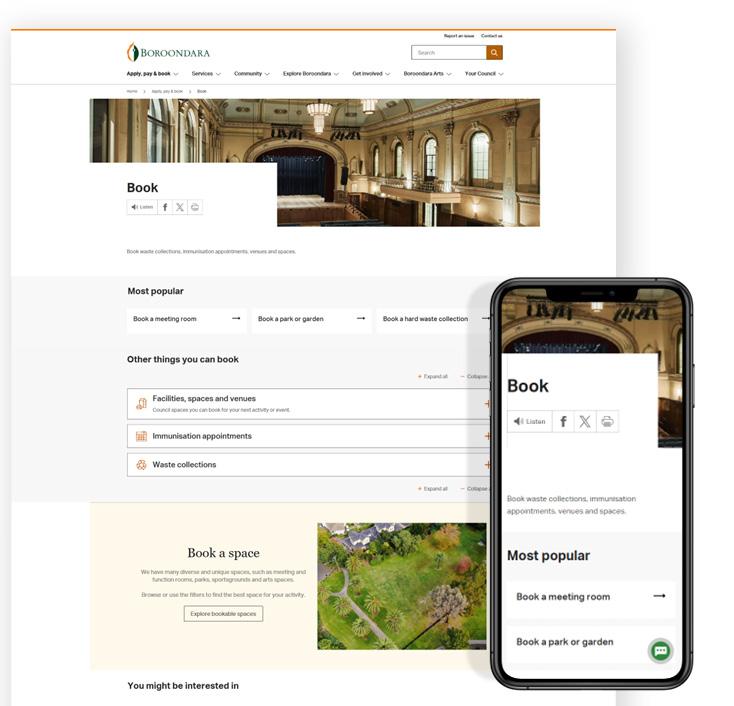
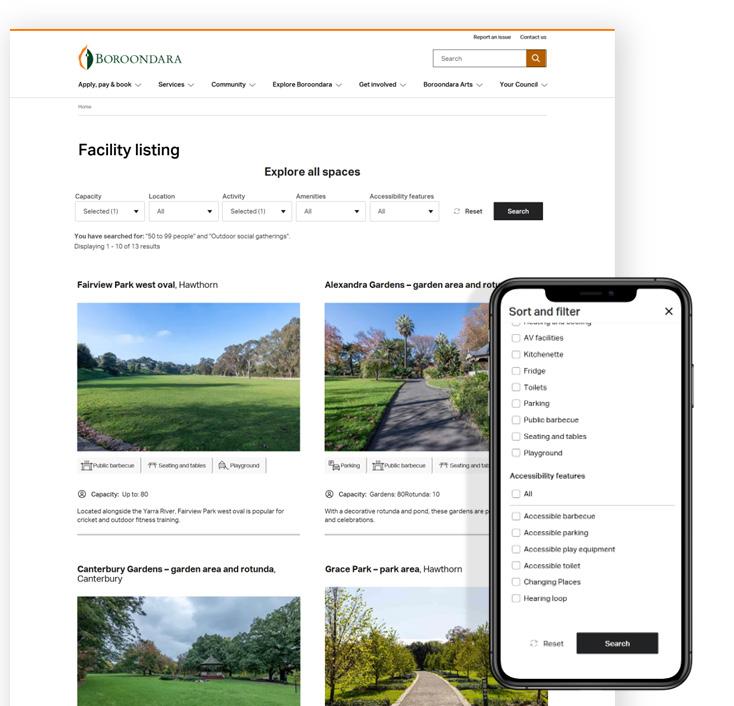

With Port Phillip’s population expected to grow by 40,000 by 2036 and increasing pressure on limited parking, the council launched a suite of digital solutions to improve the parking experience. The initiative introduced four key innovations: QR code payments for seamless guest access to PayStay, the My Parking Permits portal for managing applications and renewals, automatic permit renewals for eligible users, and an online eligibility checker.
These tools were designed through user-centric research and crossdepartmental collaboration, addressing long-standing pain points and improving accessibility, efficiency, and customer satisfaction.

Since implementation, the results have been significant. QR code payments now account for 46 per cent of transactions, while the My Parking Permits portal has reduced over-the-counter applications by 19 per cent and call centre enquiries by 13 per cent.
Auto-renewal has processed over 4,500 permits, saving 375 staff hours and reducing customer wait times by an average of 21 days. The eligibility checker is accessed 2,000 times monthly, further reducing enquiries. Staff report increased weekend bookings at community centres, and the system’s flexibility has improved operational control. This initiative demonstrates how local government can deliver innovative, scalable digital solutions that enhance service delivery, reduce administrative burden, and support a growing, digitally engaged community.



This award recognises initiatives that help to prevent disasters and mitigate climate change, that support recovery and preparedness, and/or that increase capacity to protect lives and livelihoods while reducing infrastructure damage or loss. This includes initiatives that reduce the impact of disasters, support the identification of risk and increase response capacity.
• Level of disaster risk reduction
• Level of innovative thinking in decision-making and consideration of diverse voices
• Level of community engagement
• Collaborative and coordinated approach
• Sustainable outcomes resulting in more resilient communities and enhanced capacity to prepare for and recover from emergencies
• Transferability

• East Gippsland Shire Council
Strengthened Disaster Readiness and Resilience East Gippsland
• Latrobe City Council
City Presentation Emergency Management Response
• Gannawarra Shire Council
The Gannawarra's Community Flood Recovery FINALIST

In response to the devastating 2019-20 Black Summer bushfires, East Gippsland Shire Council launched its Emergency Preparedness and Resilience initiative to embed community leadership into emergency planning. Developed in alignment with the Council Plan 2021–25 and the Inspector-General for Emergency Management (IGEM) recommendations, the initiative aimed to strengthen disaster preparedness at a local level. It exceeded expectations, fostering deeper collaboration and future-focused planning across more than 100 localities. “Our greatest asset is our people,” said Chris Stephenson, General Manager, People and Communities. “Council is committed to working closely with communities, supporting local leadership, and building long-term resilience.”
Key outcomes include the development of 46 Local Incident Management Plans (LIMPs) and 14 Community Emergency Management Plans (CEMPs), tailored by and for local communities. Emergency infrastructure was significantly upgraded with emberproofing, solar panels, microgrids, generators, and satellite communications. Victoria’s first local government “Disaster Dashboard” was launched, providing real-time, place-based emergency information.
Person-Centred Emergency Plans, Social Stories, and Sensory Kits were introduced to support vulnerable and neurodiverse residents, ensuring inclusive emergency response.
Volunteer training has empowered communities to independently operate Emergency Relief Centres (ERCs), reducing reliance on external agencies. Council also refined its Standard Operating Procedures, improving coordination and long-term preparedness. The initiative’s success is underpinned by a structured project framework, multi-agency collaboration, and integration with Council’s budget planning to ensure long-term financial sustainability. Infrastructure upgrades were aligned with existing projects, maximising impact and efficiency.
This initiative has set a new benchmark for community-led emergency planning. Its innovative, strengths-based model is scalable and transferable, with Council representatives sharing insights at state and national forums. By embedding lessons learned and empowering local leadership, East Gippsland has built a more connected, capable, and resilient community – ready to face future disasters with confidence and unity.




Latrobe City Council has transformed its disaster preparedness, response, and recovery through the development of the City Presentation Emergency Management Response Manual and a Digital Storm Map Layer. Developed following the 2021 storm events, this initiative was designed to improve data collection, optimise resource allocation, and enhance operational efficiency. During the February 2024 storm event, the initiative enabled full inspection of 1,558km of roads within 24 hours and complete road network reopening within 36 hours. The structured clean-up was completed within eight weeks, achieving a 99.31 per cent Disaster Recovery Funding Arrangements (DRFA) reimbursement success rate.
The Digital Storm Map Layer was a key innovation, enabling real-time updates on road impacts and seamless integration with Council’s request system. This digital tool streamlined DRFA data collection and improved situational awareness, allowing for faster, more accurate reporting and recovery monitoring. The initiative also overcame significant challenges, including coordinating resources across 1,426km² of hilly terrain and integrating new digital tools. These were addressed through cross-departmental collaboration, targeted staff training, and investment in scalable digital solutions.
The initiative’s outcomes extended beyond operational efficiency. It strengthened communication with the community, improved staff responsiveness, and enhanced collaboration with external agencies. Field staff were empowered to identify affected areas quickly, enabling more targeted resource deployment. The initiative also fostered greater community trust and confidence in Council’s emergency response capabilities, reinforcing Latrobe City’s commitment to proactive disaster management.
Designed for long-term sustainability, the initiative leverages existing Council resources and DRFA reimbursements while embedding ongoing maintenance into Council’s budget planning. Its structured framework and digital innovations are scalable and transferable, offering a replicable model for other councils. Latrobe City Council’s approach sets a new benchmark in local government emergency management, ensuring faster recovery, improved preparedness, and stronger community resilience.

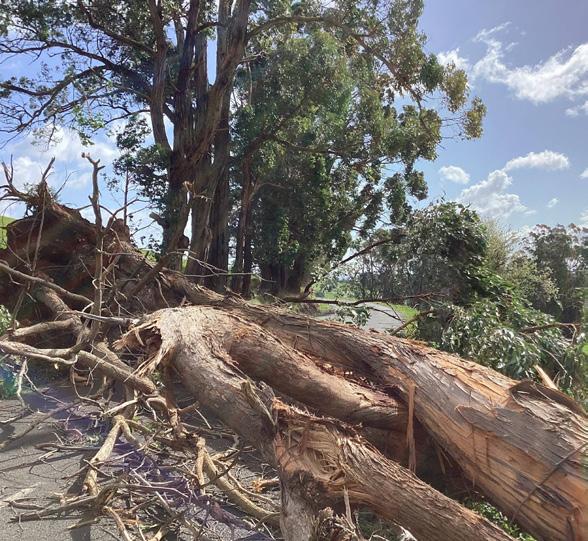


GANNAWARRA SHIRE COUNCIL
Following floods which inundated 44 per cent of the municipality in 2022, Gannawarra Shire Council adopted a place-based, community-led recovery model to empower residents to shape their own recovery. Guided by the Gannawarra Community Resilience Committee and the Community Resilience Action Plan 2023–2025, Council supported over 200 community-led events and programs focused on social wellbeing and connection; activities that would enable residents to connect and build capacity to withstand future emergencies and change.
This approach enabled residents to identify local priorities, access support, and build capacity to withstand future emergencies. As of June 2024, 33 of the plan’s 47 actions had been completed, with the remainder in progress.
Council’s model prioritised local leadership, inclusivity, and continuous improvement. Events were designed and delivered by community volunteers and organisations, supported by State and Federal funding. The plan’s built-in evaluation framework tracks outcomes, participation, and barriers, with findings shared across agencies and celebrated with the community.
A mid-term evaluation has already informed future planning, with a final review due in July 2025. This initiative has strengthened trust, improved coordination, and created a replicable model for disaster recovery. By placing communities at the centre of decision-making, Gannawarra Shire Council has fostered resilience, empowered local voices, and laid the foundation for a stronger, more connected future.

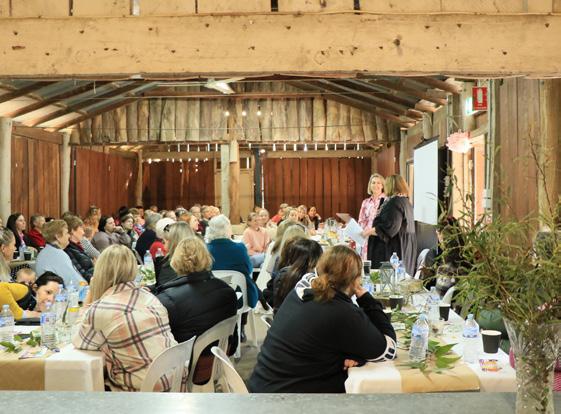

This category is open to achievements/outcomes that acknowledge, support and celebrate diversity and inclusion in relation to internal practices and/or within the broader community context. This includes, but is not limited to, ethnicity, language, ability, sex, gender, sexual orientation, age, class, education level, personality, political beliefs and other ideologies.
It is about understanding and respecting each other and moving beyond simple tolerance to embracing and celebrating the rich dimensions of diversity within each individual – whether it be in an organisational or community context.

• Commitment to diversity and inclusion
• Influence and originality
• Capacity for establishing and maintaining partnerships
• Benefits to the organisation and/or community
• Outcomes achieved within the organisation and/or the community
• Establishment of cross functional working relationship
• Mildura Rural City Council
Gendering in a New Era in Mildura Sports
• Northern Grampians Shire Council
Remembering Stella Young Project
• Ballarat City Council
My Accessibility Review

Mildura Rural City Council is leading transformative change in community sport through its pioneering initiative, Gendering in a New Era for Mildura Regional Sports. This state-funded program empowers local sporting clubs to create safer, more inclusive environments for women and gender-diverse individuals. By combining education, training, and equity auditing tools, the initiative equips clubs with the resources to identify systemic gaps and implement sustainable strategies. Over three years, 26 clubs have participated, fostering cultural change and strengthening governance across the region.
The initiative’s impact is evident in tangible outcomes: equitable distribution of club resources, the inclusion of First Nations designs in uniforms, and the development of family-friendly facilities. More than 56 staff have completed bystander intervention training, enabling clubs to address gender-based violence and inappropriate behaviour. Community-wide events like Orange Round in Sport have grown significantly, with over 700 participants in 2024 raising awareness and promoting prevention. These efforts have united clubs and community groups in a shared commitment to equity and respect.

A key strength of the initiative lies in its collaborative and intersectional approach. The council’s Equitable Access and Usage for Community Sports Infrastructure Policy embeds gender equity into club operations, supported by an online learning hub offering self-paced training and templates. Partnerships with Women’s Health Loddon Mallee, Mallee Sports Assembly, and other local organisations have amplified the program’s reach, ensuring accessibility for people of all abilities, cultural backgrounds, and linguistic communities.
Despite challenges such as resistance from traditional structures and geographic isolation, the initiative has driven lasting change. Clubs now confidently address harmful behaviours, promote inclusive practices, and champion diversity. With its scalable framework and strong policy foundation, Gendering in a New Era sets a benchmark for inclusive sport across Australia – proving that equity in sport is not only possible, but essential.



The Remembering Stella Young Project is a powerful tribute to the life and legacy of disability advocate, comedian, and journalist Stella Young. Commissioned through the Victorian Women’s Public Art Program, the life-size bronze statue stands in Stawell as a bold and enduring symbol of inclusion, resilience, and pride. Modelled on a vibrant image of Stella, the statue is designed to be hardy, striking, and approachable – reflecting her personality and impact.
A defining feature of the project is its deep commitment to accessibility and lived experience. Two collectives of women with disabilities were engaged and paid to inform the statue’s design and the accessibility of its surroundings. The sandstone plinth includes a motion-activated audio description and a QR code linking to an accessible website featuring Stella’s story. These features were developed in consultation with Auslan interpreters and visionimpaired voice artists, ensuring the statue is inclusive and informative for all. The project’s design process exemplifies universal design principles and the social model of disability in action.
The project also serves as a source of inspiration for young people in rural communities, showing that growing up in a small town is no barrier to achieving national impact. Delivered through a crossdepartmental collaboration, the initiative involved teams from Parks and Gardens, Governance, Communications, Community Development, and more. Accessibility training provided by Arts Access Victoria has since been embedded into council practice, influencing future projects and reinforcing the council’s commitment to inclusive design.
The Remembering Stella Young Project sets a benchmark for inclusive public art. Through innovation, collaboration, and a celebration of lived experience, it honours Stella’s legacy while advancing equity and accessibility for all. More than a memorial, the project amplifies the visibility of people with disabilities and celebrates the achievements of women in public life, addressing the stark underrepresentation of both in public art.



BALLARAT CITY COUNCIL
My Accessibility Review is a transformative initiative designed to improve access and inclusion for children and young people with disability across Ballarat City Council programs. Participants and their support persons attend council-led activities and provide feedback on their experience, identifying barriers and suggesting improvements. This feedback has informed the development of low-cost, sustainable solutions – such as sensory-friendly spaces, social stories, and video venue tours – that enhance accessibility and foster community connection.
The project has significantly increased disability awareness across the organisation and created a blueprint for embedding accessibility principles into future programs, events, and services.
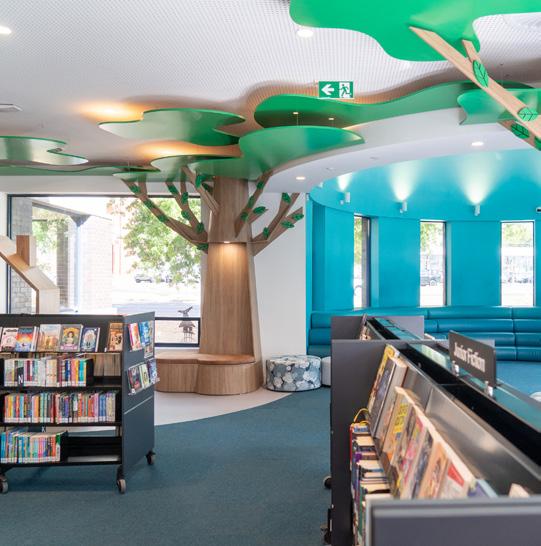
A key strength of the initiative is its focus on lived experience. Participants’ insights have shaped everything from promotional materials and booking processes to venue navigation and program content. Their contributions are acknowledged through gift cards, reinforcing the value of their input. The project has empowered families and young people to engage more confidently in community life, while also inspiring broader cultural change.
Staff intentionally created supportive environments without assumptions, allowing participants to define their own access needs.
As one support person shared, “It helps us experience different activities that I may have otherwise put in the too hard basket.”
The initiative continues to grow, with learnings shared across departments and the wider community.



Initiatives that demonstrate excellence in the delivery of environmentally sustainable processes or projects. These provide a new way of ensuring programs, projects and developments meet present needs without compromising future generations.
• Clarity of the initiative’s outcomes
• Innovative features
• Size and complexity of initiative relative to funding
• Cost benefits
• Sustainability of project

• Yarra Ranges Council Yarra Ranges Biochar Facility
• Nillumbik Shire Council
Saving the Charming Spider-orchid
• Bayside City Council
Library of Things
• Greater Geelong City Council
Organic Waste to Organic Veggies
• Yarra City Council
Business Renewables Buying Group

The Yarra Ranges Biochar Facility is a groundbreaking initiative –noted as a first of its kind in Australian local government – delivering environmental innovation through a unique public-private partnership. Developed in collaboration with Earth Systems and ECOSS, the facility transforms woody waste into high-value biochar and wood vinegar, contributing to carbon sequestration, improved soil health, and air quality. Since opening in October 2023, the facility has processed over 1,500m³ of woody waste into 450m³ of biochar and 15,500 litres of wood vinegar, sequestering approximately 300 tonnes of CO₂e.
The facility was established to address the growing need for sustainable waste management, climate change mitigation, and disaster resilience. Biochar produced at the facility enhances soil health and water retention, while wood vinegar serves as a natural fertiliser and pest repellent. The project also reduces the need for open burning, improving local air quality and reducing bushfire risk – an essential benefit for Yarra Ranges, Australia’s second-most disaster-impacted municipality.

The facility’s ability to process storm debris into biochar adds a critical layer of resilience in the aftermath of severe weather events.
Community engagement has been central to the project’s success. ECOSS has delivered educational workshops and programs to over 1,400 community members, raising awareness of biochar’s environmental benefits and fostering a culture of sustainability. Residents can purchase biochar and wood vinegar at discounted rates, encouraging local uptake and supporting circular economy principles. Despite operational challenges, the facility has proven the viability of local-scale biochar production and its broad environmental and social benefits.
The Yarra Ranges Biochar Facility exemplifies innovation, collaboration, and measurable impact. It has delivered tangible environmental outcomes, strengthened community resilience, and embedded sustainability into local practice. As a replicable model, it sets a new benchmark for climate action and circular economy initiatives in local government.
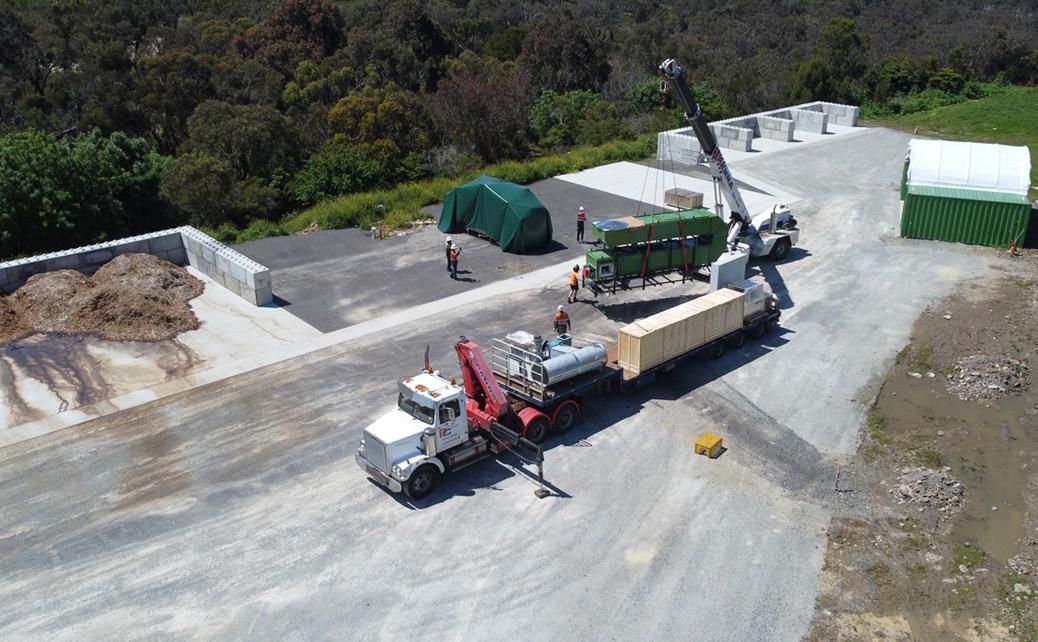


NILLUMBIK SHIRE COUNCIL
With fewer than 50 wild plants remaining, the Charming Spider-orchid (Caladenia amoena) is one of Australia’s most endangered plant species, found only within Nillumbik Shire. In 2024, following seven years of planning, over 400 plants were successfully reintroduced to three carefully selected sites. This landmark conservation effort was led by Nillumbik Shire Council in collaboration with landholders, volunteers, researchers, and government agencies. The project aims to reduce extinction risk, preserve genetic diversity, and inspire local action to protect biodiversity through community engagement and education.
The initiative was delivered through the Nillumbik Threatened Orchid Recovery Team (TORT), a long-standing partnership involving Council, DEECA, Parks Victoria, Royal Botanic Gardens, ANOS-Victoria, and others. Guided by best-practice conservation principles, including the Royal Botanic Gardens’ Orchid Translocation Guidelines, the project followed a structured approach from seed collection and propagation to site preparation and longterm monitoring. Council chaired the project, coordinating grant funding, stakeholder engagement, and on-ground delivery.
This marks the first time a local government has led such a complex orchid translocation project, setting a new benchmark in municipal biodiversity leadership.
The project’s success extends beyond species recovery. It has enhanced habitat quality for other threatened flora and fauna, strengthened cross-sector collaboration, and empowered the community through education and hands-on conservation. Local landowners and environmental volunteers played a vital role in managing threats and fostering stewardship. The orchid’s striking beauty and rarity have made it a flagship for broader biodiversity initiatives, raising awareness and support for conservation across the region.
Aligned with Council’s Biodiversity Strategy and its goal of “no local extinctions,” this project demonstrates how local government can lead innovative, science-based conservation. It provides a replicable model for threatened species recovery and reinforces Nillumbik’s commitment to protecting its unique natural heritage for future generations.




BAYSIDE CITY COUNCIL
Launched in April 2024 at Beaumaris Library, Bayside’s Library of Things is a community-based sharing initiative that enables residents to borrow household items such as tools, kitchen appliances, sewing machines, and even induction cooktops rather than purchasing them. With 40 items now in the collection and over 600 loans in the first 10 months, the program supports the circular economy by reducing waste, promoting reuse, and lowering the carbon footprint associated with product consumption.
It also aligns with Council’s Electrify Everything campaign, offering greener alternatives like battery-powered gardening tools and induction cooktops to encourage sustainable living.
The Library of Things is a practical response to Bayside’s Climate Emergency declaration and Climate Action Plan 2020–2050, which includes transitioning to a circular economy. It provides residents, particularly those in apartments or downsizing households, with access to items they may only need occasionally, without the burden of ownership or storage.
The initiative builds on the success of Bayside Libraries’ broader lending programs, which already include drones and digitisation equipment. By offering these items at no cost, the Library of Things fosters a culture of sharing, reduces landfill, and empowers the community to adopt more sustainable lifestyle practices –making it a valuable and replicable model for local government-led climate action.



The Circular Economy Garden Initiative is a creative and community-driven solution to one of local government’s most persistent waste challenges. Led by the Greater Geelong, the project diverts over 1,650 tonnes of problematic organic waste from landfill annually, including herbicide-treated grass, sea grass, and soft-fall mulch. These materials are transformed into a nutrient-rich compost blend, now used in raised wicking beds at the Geelong West Community Garden.
This innovative approach not only reduces landfill costs and emissions but also rejuvenates the garden, boosts membership, and supports Council’s sustainability goals. The project exemplifies how circular economy thinking can deliver environmental, economic, and social benefits.
The initiative was made possible through collaboration between Council’s Waste Services and Parks teams, community garden members, and local champions. Raised wicking beds were introduced to address soil contamination concerns and improve accessibility, water efficiency, and crop yields. Community engagement was key, with demonstrations and open dialogue helping to shift perceptions and build support.
The result is a thriving, intergenerational garden space that showcases the power of composting and reuse. With proven results and a scalable model, the Circular Economy Garden Initiative offers a replicable blueprint for councils seeking to close the loop on organics while strengthening community connection.


The Business Renewables Buying Group (BRBG) is a pioneering initiative enabling medium-to-large businesses to access affordable renewable energy through group purchasing. By consolidating procurement needs and leveraging council expertise, the program reduces the cost and complexity of securing long-term Power Purchase Agreements (PPAs).
To date, the initiative has facilitated two group buys, securing approximately 40 GWh of renewable electricity annually – equivalent to removing 19,500 cars from the road – and reducing 32,000 tonnes of CO₂ emissions each year. The program is open to all Victorian businesses with large market electricity connections and is poised for national expansion.

The BRBG directly supports Council’s goal of achieving net zero emissions by 2035 and strengthens the local economy by helping businesses reduce energy costs and improve sustainability credentials.
The initiative was made possible through collaboration with 38 councils and eight Victorian Greenhouse Alliances, demonstrating the power of collective action. By reducing the cost of accessing PPAs from around $50,000 to as low as $13,000, the program has made renewable energy more accessible to smaller businesses. The BRBG is a scalable, replicable model that empowers councils to lead climate action while supporting business resilience and accelerating the transition to a clean energy future.



Projects demonstrating new ways of leading, facilitating, administering, controlling or ensuring a particular outcome is achieved and that make positive changes to management of an organisation’s practices or projects.
• Clarity of program/project objectives and outcomes
• Originality and effectiveness of the initiative
• Achievement of project versus intention
• Sustainability/transferability of the initiative
• Demonstrated leadership
• Size and complexity of initiative relative to funding and resources

• Boroondara City Council
Innovation Academy
• Maribyrnong City Council
Creative Spaces
• Bass Coast Shire Council
Beach Safety: Innovation and Collaboration in Bass Coast

Boroondara’s Innovation Academy is a 12-week in-house training program designed to build staff capability in creative problemsolving and innovation. Now in its sixth iteration, the Academy equips participants with a structured, repeatable framework to tackle real workplace challenges. It fosters a culture of continuous improvement, enhances service delivery, and strengthens collaboration across departments. With strong executive support, the program has become a cornerstone of organisational development, embedding innovation into daily operations and delivering measurable benefits to staff and the community.
The Academy’s objectives include building a culture of innovation, improving cross-team collaboration, and empowering staff to lead change. Participants are trained in user-centred design, evidencebased decision-making, and practical tools for identifying and implementing solutions. The program’s success is evident in the initiatives developed by participants, which have improved customer experience, streamlined processes, and optimised resource use. Graduates of the Academy continue to apply their skills beyond the program, creating a growing network of innovation champions across the organisation.
A key strength of the Academy is its structured yet flexible approach. Real workplace challenges ensure immediate relevance, while a supportive environment encourages experimentation and learning. Despite initial resistance and time constraints, the program has thrived due to strong leadership and a clear demonstration of value. Staff engagement has grown with each iteration, and the Academy has become a model for fostering innovation in local government.
Financially sustainable and requiring minimal external investment, the Innovation Academy is a scalable and transferable model for other councils. It has transformed workplace culture by empowering staff to think creatively, collaborate effectively, and deliver better outcomes for the community. The Academy exemplifies how local government can lead innovation from within, creating lasting impact through capability building and a shared commitment to continuous improvement.

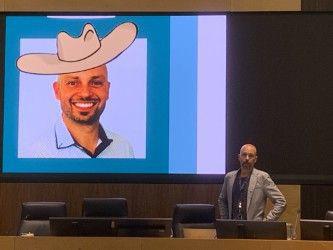
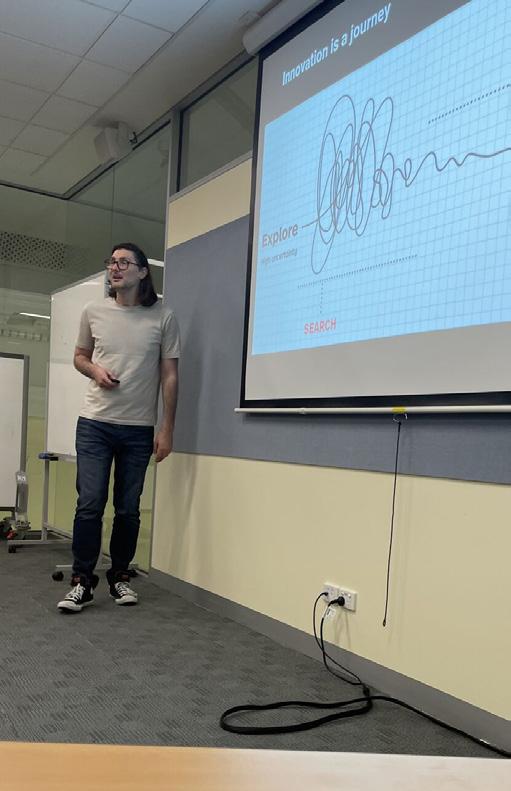

Creative Places is a council-led initiative addressing two key challenges in Maribyrnong: a shortage of affordable creative spaces and high commercial vacancy rates, which impact foot traffic and perceptions of public safety. Despite Footscray’s designation as a State Government Creative Neighbourhood, the area lacks sufficient cultural infrastructure to realise its creative and economic potential. Without intervention, long-term vacancies risk reinforcing negative perceptions and limiting precinct activation. Creative Places embeds cultural infrastructure into commercial precincts, supporting Council’s broader goals of economic revitalisation, urban renewal, and place-based activation.
Through partnerships with landlords, Victoria University, arts organisations, and local traders, Creative Places has activated five vacant sites in central Footscray. Over 20 creatives have benefited from below-market rate tenancies, contributing to the local economy through exhibitions, performances, and community events. A major public photographic exhibition on a prominent vacant site further showcased Footscray’s creative potential.

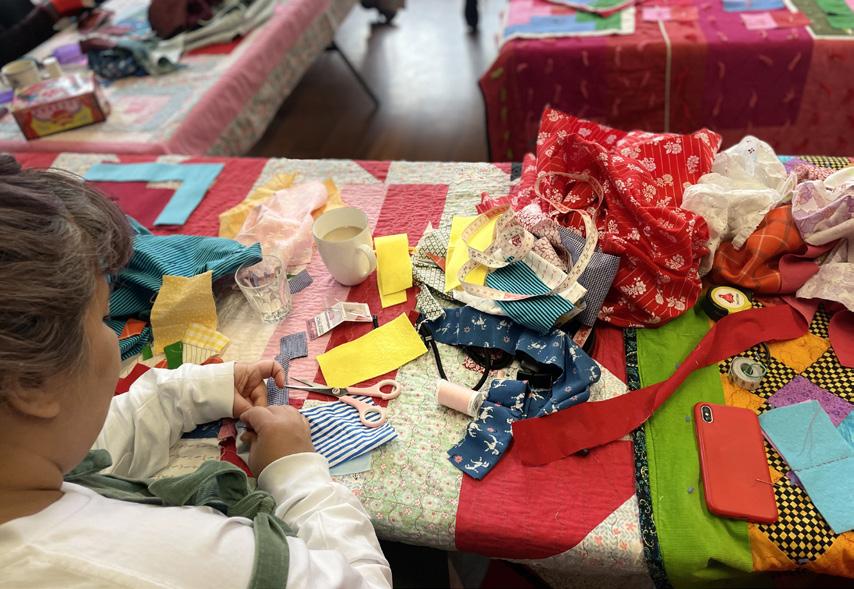
Key objectives include brokering tenancies for creatives, positioning landlords as leaders in urban renewal, and strengthening trust between Council, the creative sector, and property owners.
The initiative flips the traditional Council-landlord relationship by recognising property owners as key partners in cultural development. Arts-led tenancy models have demonstrated benefits such as increased property value, reduced vacancy costs, and enhanced precinct vibrancy. Creative Places has attracted significant media attention, including ABC Radio interviews, print and digital features, and a mention in Parliament by MP Katie Hall. It is also strengthening Footscray’s identity as a creative and economic hub.
With a scalable governance model and live discussions underway for future licences and tenancy extensions, Creative Places offers a replicable framework for other councils. It exemplifies how local government can lead innovative, low-cost urban renewal by embedding arts and culture into the city’s fabric – delivering lasting outcomes for community, economy, and place.


BASS COAST SHIRE COUNCIL
Bass Coast Shire Council has taken bold and innovative steps to address the critical issue of beach safety for both local communities and the thousands of visitors who flock to its iconic coastline each year. In response to a series of tragic drowning incidents, the Council led the formation of the Beach Safety Working Group, delivering a significant uplift in safety messaging, signage, and infrastructure. This initiative has not only improved safety outcomes but also redefined how local government can lead in emergency preparedness and public education.
Recognising the need for broader collaboration, Bass Coast joined forces with Mornington Peninsula Shire to establish the Cross-Council Beach Safety and Drowning Prevention Group. This pioneering partnership, in collaboration with Life Saving Victoria and other key stakeholders, has developed Victoria’s first regional Cross-Council Drowning Prevention Framework. The group’s work has focused on culturally responsive engagement, particularly with culturally and linguistically diverse (CALD) communities, many of whom travel from metropolitan areas to enjoy the coast.
The initiative has been widely recognised for its sector leadership, with presentations delivered at the National Multicultural Communities Water Safety Workshop and the Victorian Inland Waterways Forum. These platforms have enabled the group to share best practice approaches and advocate for a more coordinated, inclusive, and evidence-based model of beach safety. The project has also attracted grant funding to support innovative infrastructure and messaging campaigns, further amplifying its reach and impact.
By redefining the scale and scope of local government partnerships, Bass Coast Shire Council has created a replicable model for regional collaboration in water safety. The Cross-Council Framework is now informing emergency management strategies across Victoria, offering a new benchmark for how councils can work together to protect vulnerable communities and save lives along our coastlines.


Initiatives demonstrating best practice (outstanding action), or the pursuit of excellence in service/s delivery to the community or specified target market that will be continued.
• Clarity of demonstrated outcomes
• Benefits relative to cost
• Size and complexity of initiative relative to funding and resources
• Innovative and defining features
• Effectiveness/transferability
• Financial sustainability
• Ability to meet specific clients/target group needs

• Banyule City Council
CX Data Driven Transformation Initiative
• Maribyrnong City Council, Moonee Valley City Council, Hobsons Bay City Council, Merri-bek City Council, Yarra City Council, Wyndham City Council, Brimbank City Council, Glen Eira City Council, Stonnington City Council and Mornington Peninsula Shire Council
My Smart Garden
• East Gippsland Shire Council
Mobile Service Initiative
• Maribyrnong City Council
Business Elevate Program
• Moyne Shire Council and Corangamite Shire Council
Shared Service Library Model

Banyule City Council’s CX Data Driven Transformation Initiative has redefined how local government can harness technology and training to elevate customer service and decision-making. Informed by community feedback and a 2022 Voice of Customer survey, the project addressed key service expectations: self-service options, timely acknowledgements, clear resolution timelines, and closing the loop on enquiries. Through a hybrid Agile approach and human-centred design, the initiative delivered a suite of system improvements and training programs that have transformed the customer experience and internal operations.
At the heart of the initiative was the development of dynamic webforms and automated communications, enabling 70 per cent of hard waste and missed bin requests to be completed online. These forms now integrate directly with Council systems, generating work orders without manual intervention and significantly reducing human error. A new entitlements database provides real-time information to customers, reducing call volumes and empowering residents to manage their services independently and efficiently.
To ensure data integrity and maximise the value of system enhancements, the team implemented a comprehensive training program covering 91 core competencies. This training has equipped staff with the skills to maintain clean data and deliver consistent, high-quality service. The result is a robust data environment that feeds into intuitive Power BI dashboards, offering stakeholders real-time insights to inform strategic decisions and resource allocation.
The project’s success was driven by cross-council collaboration. The Digital Transformation team led system integration and data development, Communications created user-friendly webforms and messaging, and the CX Strategy team delivered training and built a centralised data warehouse. Together, they created a scalable model for digital transformation in local government – one that enhances operational efficiency, empowers staff, and delivers a more responsive, transparent, and satisfying experience for the community.

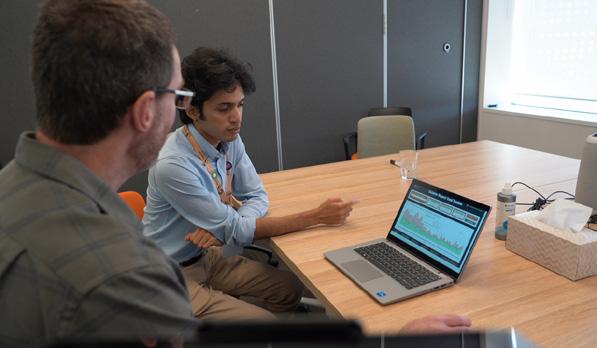


MARIBYRNONG CITY COUNCIL, MOONEE VALLEY CITY COUNCIL, HOBSONS BAY CITY COUNCIL, MERRI-BEK CITY COUNCIL, YARRA CITY COUNCIL, WYNDHAM CITY COUNCIL, BRIMBANK CITY COUNCIL, GLEN
My Smart Garden is a sector-leading multi-council partnership that empowers residents to transform their outdoor spaces into sustainable, productive, and resilient gardens. Teaching across five core themes – food, shelter, waste, water, and habitat – the program also addresses broader issues such as climate resilience, cost-of-living pressures, and community wellbeing. In 2024, the program delivered 69 free workshops, published 51 online resources, and engaged over 10,000 residents, demonstrating the power of collaborative governance in delivering meaningful, place-based sustainability outcomes.
The program’s strength lies in its ability to make sustainable living accessible and engaging. Participants learn to grow food, compost waste, harvest water, and create habitat – all while improving their health, reducing bills, and building social connections. From balconies to backyards, residents are supported to create thriving ecosystems that cool homes, reduce flooding, and support biodiversity. These outcomes directly contribute to council objectives in climate adaptation, waste reduction, and community health.

In 2023–24, the partnership transitioned to a new governance model, establishing Executive and Operational Committees, a dedicated Program Coordinator, and a central funding pool. This structure enabled the co-design of a five-year strategic plan, the development of a communications strategy, and the onboarding of two new councils, including the program’s first rural partner. The program’s impact has been recognised nationally, including as a finalist in the 2024 Banksia Sustainability Awards and through features in Gardening Australia and regular appearances on 3CR radio.
My Smart Garden is more than a gardening program – it’s a scalable, strategic model for community engagement and environmental action. By embedding sustainability into everyday life, the program supports residents to live well and councils to meet their environmental and social goals. With a renewed Memorandum of Understanding in place until 2026, the partnership is poised for continued growth, innovation, and impact across Victoria.
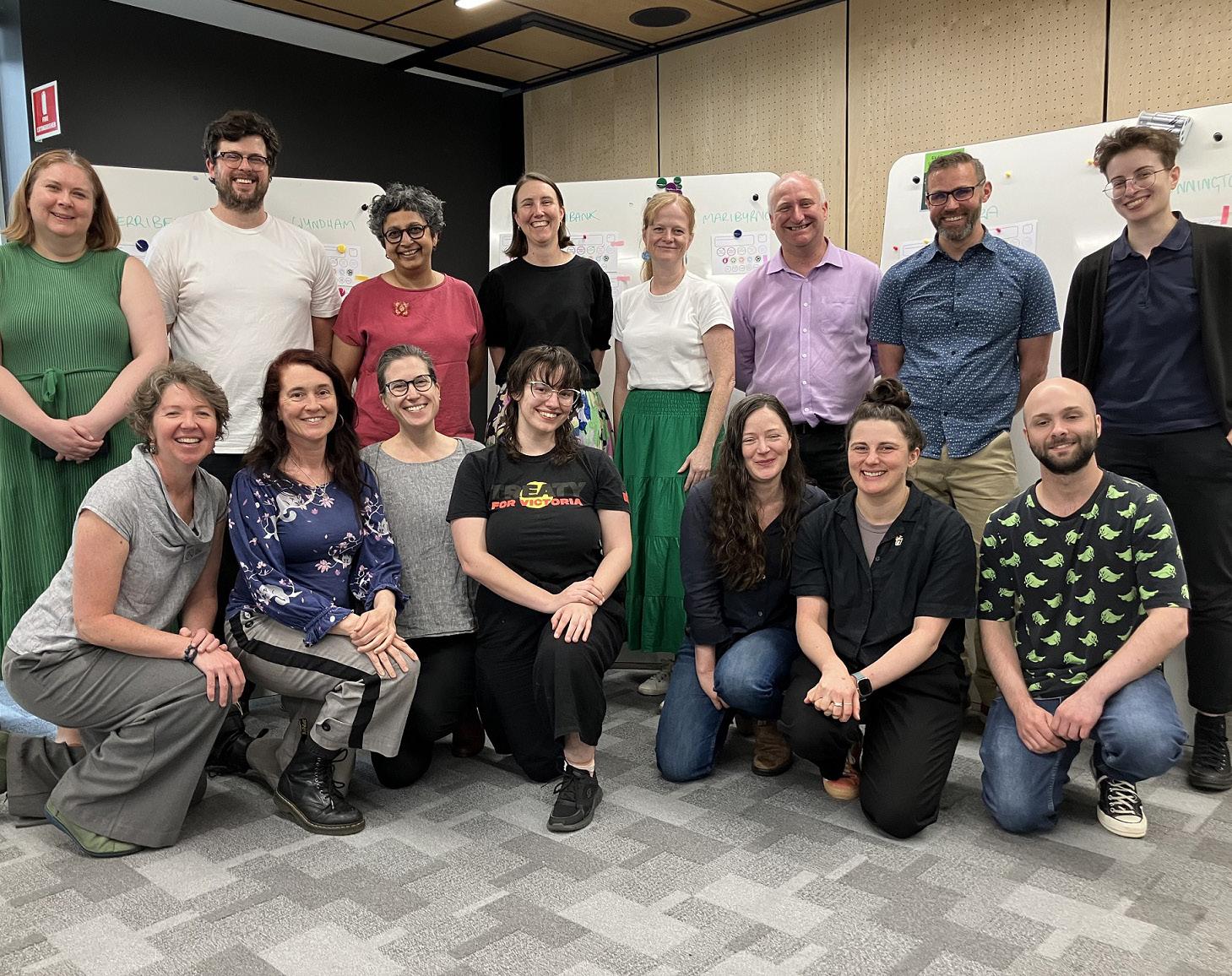

To improve access to essential services across one of Victoria’s most remote and expansive regions, East Gippsland Shire Council introduced two multipurpose mobile service vans. These vans deliver integrated library, customer service, and digital connectivity across 47 locations, travelling over 60,000 kilometres in the past year.
With 3,500 library items on board and access to Wi-Fi, council forms, payments, and support services, the vans have become trusted touchpoints for residents, many of whom live hours from traditional service centres. This initiative has redefined how the council connects with its communities, ensuring equitable access, inclusion, and engagement across tens of thousands of square kilometres.

Driven by extensive community consultation, the initiative addressed a critical service gap in the Shire’s eastern regions. The vans now serve as mobile hubs for council and community engagement, enabling other departments to conduct outreach, surveys, and consultations in real time.
Staff have been upskilled to provide a broader range of services, from animal registrations to digital support. The program’s success lies not only in its reach but in its ability to foster social connection and trust in areas where the council’s presence was once limited. It stands as a leading model for rural service delivery, demonstrating innovation, adaptability, and deep community impact.


Maribyrnong City Council’s Business Elevate Program reimagines traditional grant delivery by doubling the impact of Council investment through a unique local supplier model. Developed in response to the economic challenges following Victoria’s pandemic lockdowns, the program simplifies the grant process while ensuring funds stay within the local economy.
Grant recipients select from a panel of “Preferred Business Suppliers,” showcasing local talent and fostering professional networks. The program’s streamlined application process, hosted on SmartyGrants, has proven highly effective, filling all available slots within a day and receiving over 100 applications in its first round alone.
Since its launch, the program has awarded 204 grants and engaged over 85 local suppliers, directly benefiting nearly 290 businesses. Annual networking events celebrate success stories and strengthen connections between participants, Councillors, and stakeholders. The program’s governance ensures fairness, transparency, and scalability, with the 2024–25 round receiving a record 153 applications.
Business Elevate has become a cornerstone of Council’s economic development strategy, demonstrating how local government can broker meaningful outcomes for small businesses. By amplifying existing talent and creating new pathways for collaboration, the program exemplifies innovation in local economic support and sets a benchmark for grant delivery models across the sector.


SHIRE COUNCIL AND CORANGAMITE SHIRE COUNCIL
In a bold and complex transition, Moyne and Corangamite Shire Councils successfully brought their library services inhouse, establishing a shared service model that has delivered enhanced outcomes within existing budgets. The initiative followed the dissolution of a regional library corporation, prompting both councils to collaborate on a single administrative entity.
This model eliminated duplication, streamlined operations, and broadened service offerings. With centralised management of staffing, events, IT systems, and collections, the library service has expanded its reach and appeal – offering everything from digital literacy sessions to chess clubs and jigsaw swaps – while remaining financially sustainable.
The initiative also reinvigorated community engagement, with a refreshed brand, new communications, and a surge in memberships and participation. Libraries have become vibrant community hubs, hosting programs like FReeZA and responding directly to user feedback, introducing weekend family story time in response, for example.
The model has not only preserved but enhanced service delivery, proving that localised, collaborative governance can yield exceptional results. Coming in under budget while increasing usage and satisfaction, the shared service model is now regarded as a benchmark for rural library innovation, demonstrating how councils can adapt with agility and vision to meet evolving community needs.




Initiatives that are exceptional and one-off. Projects entered in this category must be original and assist the community over and above the Council’s day to day activities.
• Clarity of program/project objectives and outcomes
• Demonstration of an effective/innovative approach and outcomes
• Impact of the initiative
• Size and complexity of initiative relative to funding and resources
• Extent of leading practice
• Cost benefits of the initiative

• Greater Shepparton City Council Talk Talk Play! Program
• Kingston City Council
Playground Inspectors Program
• Banyule City Council
1,000 Jobs for Banyule

Talk Talk Play! is an innovative early intervention program developed by Greater Shepparton City Council to support two- and three-yearold children experiencing delayed language development. Introduced under the Best Start Early Years Plan, the program addresses long wait times for clinical speech pathology by equipping parents with practical strategies to support their child’s communication skills. Delivered over five weeks by qualified speech pathologists, the program combines a parent workshop with interactive playgroup sessions, creating a supportive environment where families can learn and practise together.
The program’s primary objective is to build parents’ confidence and capacity as their child’s first educator. Outcomes include improved language skills for children, increased engagement in early childhood education, and stronger family knowledge and support. Evaluation results are compelling – 90 per cent of parents reported increased confidence in supporting their child’s speech, and 95 per cent said they had changed how they interacted with their child. Parents described the program as empowering, offering them tools to act while waiting for formal therapy.
Talk Talk Play! was developed in response to growing concern from families and service providers about long delays in accessing speech pathology. Council took the lead in designing and piloting the program, forming new partnerships with community and private speech pathologists. The initiative has also created a new referral pathway for Maternal and Child Health nurses and offers a scalable model for other councils and health services. The program’s groupbased format allows more families to benefit while reducing pressure on the health system.
By providing free, accessible support to families – particularly those ineligible for Medicare or NDIS – Talk Talk Play! is helping to close the gap in early language development. It exemplifies Council’s commitment to innovation, equity, and early years excellence, and offers a replicable model for communities across Victoria.



Kingston City Council’s Playground Inspector Program empowers children to shape the future of their local play spaces. Launched in September 2023 as part of the Play Your Way Strategy, the initiative invites children of all abilities to become official “Playground Inspectors,” providing valuable feedback on playground design and functionality. Equipped with a branded kit – including a hat, badge, notebook, and map – children are encouraged to explore playgrounds and share their expert insights. The program fosters autonomy, inclusion, and creativity, while offering council officers a direct line to the voices that matter most: the children who use these spaces every day.
The program’s primary goal was to ensure meaningful participation from children and families. A streamlined registration process, supported by flyers, digital channels, and QR codes, made it easy for families to get involved. Once registered, children received a welcome email and collected their kits from designated locations. Privacy was prioritised, with only essential information collected.
Feedback gathered from the inspectors was shared with relevant departments to inform future playground renewal and implementation planning, ensuring that community input directly shapes council decisions.
The initiative has been embraced by early years educators, playgroups, and families across Kingston. With 317 children and 202 families currently registered, the program has become a rolling success. Delivered in two structured rounds, it has captured a broad range of insights from diverse locations. The program has also encouraged families to explore new playgrounds, strengthening community connections and increasing awareness of councilmanaged facilities. Intergenerational participation has further enriched the experience, sparking conversations about play, safety, and design.
By placing children at the centre of playground planning, Kingston has set a new benchmark for inclusive community engagement. The Playground Inspector Program not only enhances council decision-making but also celebrates the creativity and insight of Kingston’s youngest residents.



Banyule City Council has redefined inclusive economic development, achieving its ambitious goal of 1,000 local job outcomes for residents facing systemic barriers – and one year ahead of schedule. This bold initiative focused on supporting First Nations people, culturally diverse communities, people with disability, and disengaged youth. By embedding inclusive employment across Council operations and forming strategic partnerships with social enterprises and local businesses, Banyule delivered 1,023 job outcomes, demonstrating the power of local government to drive systemic change.
The strategy’s success lies in its community-led design, whole-ofCouncil alignment, and flexible delivery. The Inclusive Employment Program supported 121 disadvantaged locals into entry-level and skilled roles, with 84 per cent progressing to further employment or education. The first-of-its-kind Social Enterprise Partnership Program created 403 employment and training opportunities and catalysed a fivefold increase in social enterprises operating in Banyule. Additional outcomes included 136 job placements with local employers, 143 volunteer-to-employment pathways, and 97 work experience opportunities.
Banyule also leveraged its procurement power to embed social outcomes into purchasing decisions. Initiatives such as the Fruit2Work supply agreement and a social enterprise catering panel exemplify how public contracts can drive inclusive employment. The strategy’s adaptability during the pandemic, including remote training and virtual engagement, ensured continued progress despite external challenges. These efforts not only reduced unemployment among disadvantaged groups but also strengthened community cohesion and reduced reliance on social services.
Beyond the numbers, Banyule’s approach has inspired other councils to replicate its model, amplifying its impact across the sector. The initiative has raised awareness of inclusive hiring, fostered local collaboration, and created a blueprint for building thriving, equitable economies. Banyule’s leadership in inclusive employment and social enterprise development sets a new standard for local government innovation and impact.

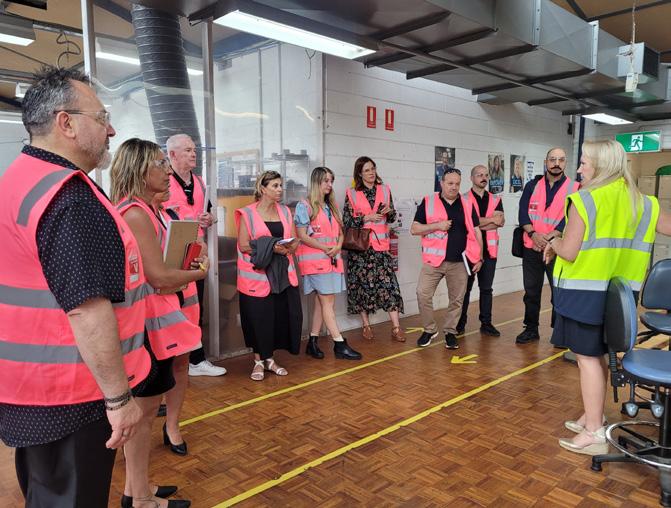
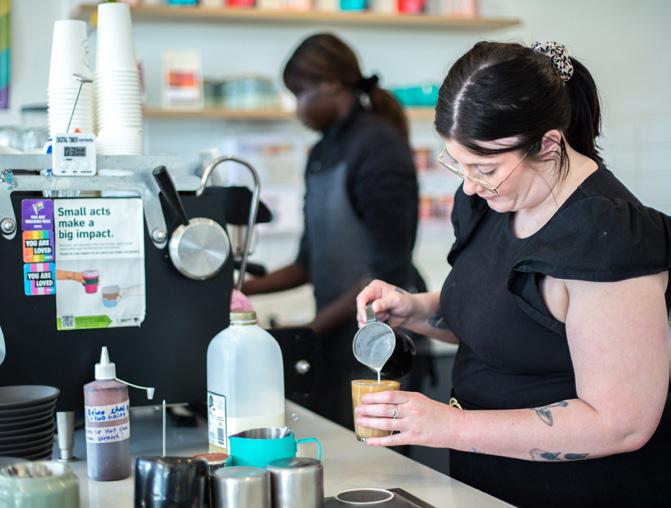

This category recognises the resource challenges faced by smaller rural councils. Nominations received by eligible councils in the existing categories (except for Young Achiever) will automatically be entered into this new category without a separate submission having to be made.
• Demonstration of program/project objectives and measurable outcomes
• Demonstrated innovative approach
• Size and complexity of initiative relative to funding
• Impact of initiative on community/organisation, relative to resources and cost
• Transferability of initiative

• Hepburn Shire Council
Djuwang Baring – Creswick Trails
• Central Goldfields Shire Council
Truth Telling, Healing and Creating for Community on Djaara Country
• Murrindindi Shire Council
Flood Recovery

HEPBURN SHIRE COUNCIL
In 2024, Hepburn Shire Council proudly completed Djuwang Baring, a 60km mountain bike trail network across 70 segments in Creswick. Traversing Djaara Country and weaving through State Forests, Regional Parks, and plantation lands, the network offers a worldclass riding experience while celebrating the region’s forest ecology, mining heritage, and cultural significance. Years in the making, this landmark project has transformed Creswick into a premier Trails Town, attracting visitors from across Victoria and beyond, and delivering a major boost to local tourism and economic activity.
The project was guided by a vision to create a sustainable, inclusive, and culturally respectful trail network. Developed in close collaboration with Djaara and Djandak, over half the trails are named in the Dja Dja Wurrung language, embedding cultural heritage into the landscape. Expert input from ecologists, arborists, archaeologists, and cultural historians ensured the trails were sensitively sited, with only 130 of the 1,600 permitted trees removed – each relocated on-site. This careful planning preserved ecological integrity while enhancing visitor safety and reducing environmental damage.

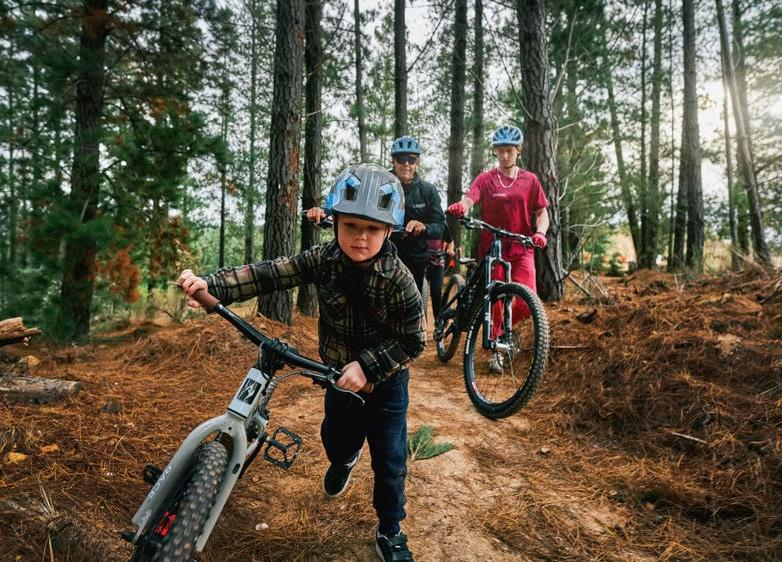

Djuwang Baring represents more than a recreational asset – it is a testament to the power of collaboration, careful planning, and community involvement. The project set a new benchmark for trail design by integrating expert knowledge with Traditional Owner insights and community consultation. Its inclusive design, featuring adaptive cycling options and accessible amenities, reinforces the principle that outdoor recreation should be available to all. The Hammon Park trailhead has become a vibrant hub for events and connection, further enhancing Creswick’s appeal.
The trail network’s impact is already evident, with local businesses reporting a 25 per cent increase in revenue and strong visitor feedback. Djuwang Baring stands as an enduring legacy of what can be achieved when diverse groups unite around a shared vision – one that promotes economic vitality, environmental stewardship, cultural heritage, and community wellbeing.


In a region proud of its goldrush heritage but with limited engagement with Traditional Owners, Central Goldfields Shire Council partnered with DJAARA (Dja Dja Wurrung Clans Aboriginal Corporation) and their enterprise DJANDAK to deliver two transformative projects: the “garingalang gatjin wii” healing garden and the “Welcome Stranger” truth-telling animation. These initiatives have reshaped public spaces and community understanding, laying the foundation for Council’s first Reconciliation Action Plan and a deeper, ongoing partnership with Traditional Owners. Over 17,000 staff, volunteers, community members and visitors have engaged with the garden or viewed the animation.
The healing garden, meaning “water and fire garden,” was envisioned by Djaara Elder Aunty Marilyne Nicholls as a place of healing and learning for all. Located beside the Central Goldfields Art Gallery, the once-neglected carpark has been transformed into a vibrant cultural space through the leadership of the Djaara Wartaka group of Elders and artists.
The garden has become a culturally safe space for Djaara community and a transformative experience for non-First Nations visitors. It was featured in the 2024 Venice Biennale’s Australian Pavilion and will form part of a broader wellbeing corridor aligned with the new Maryborough hospital development.
The “Welcome Stranger” animation, originally focused on the goldrush, was reimagined to include a Djaara truth-telling narrative, acknowledging the impact of colonisation on People and Country. DJAARA CEO Rodney Carter described it as “the best example I’ve seen of storytelling that combines First Nations and colonial perspectives.” The project has built trust, partnerships, and collaboration across Council, with all departments invited to learn about Djaara People, Culture and Country. These initiatives exemplify how truth-telling, creativity, and cultural respect can drive reconciliation. They have shifted community attitudes, strengthened inter-organisational partnerships, and established a replicable model for local government-led cultural transformation.




Launched in October 2023, the Farmers First Wellness Program is a community-led response to the growing health challenges faced by farmers following the devastating 2022 floods and seven subsequent disaster events. Recognising farmers as a high-risk group, the program delivered over 470 consultations across 19 free clinics, offering early intervention, clinical referrals, and access to allied health services.
By bringing services directly to the Yea Saleyards on sale days –a trusted setting for farmers – the program overcame barriers of distance, time, and stigma. Services included cardiovascular checks, skin cancer screenings, mental health support, and referrals to financial and social services.
The program has normalised proactive health-seeking behaviours and strengthened trust between rural communities and healthcare providers. While focused on farmers, it remained inclusive and accessible to all residents.
It aligns with Murrindindi Shire Council’s strategic goals of improving health access, supporting disaster recovery, and enhancing community wellbeing. Led by women in rural health and agriculture, the initiative also supports the business plans of the Yea Saleyards and Yea Hospital. More than a health service, Farmers First is a replicable, community-driven model that fosters resilience, reduces health inequalities, and strengthens social cohesion – proving that when services go to where people are, lives are changed.




This award acknowledges recognisable achievements of people up to 30 years of age (as of 31 December 2024) working in Local Government. Nominations will be accepted from both LGPro Members and Non-Members.
The person putting forward the nomination must be an LGPro Member, however it is not a requirement for the nominee to be an LGPro Member.
• Major achievements of the nominee
• Demonstrated leadership qualities
• Level of commitment to driving change
• Specific individual contribution made to Council and/or sector
• Commitment to self-development

• Samantha Johns Baw Baw Shire Council
• Declan Napier Greater Shepparton City Council
• Ezekiel Dobelsky Glen Eira City Council
• Lisa Morrison Glen Eira City Council
• Kiara Noonan Macedon Ranges Shire Council
• Irshad Ghazi Casey City Council
• Dylan Taylor Gannawarra Shire Council

BAW BAW SHIRE COUNCIL
Samantha – or just Sam – leads Baw Baw Shire’s Family Friendly Baw Baw initiative with exceptional creativity, drive, and vision. What began as a modest, unfunded program has flourished under Sam’s leadership into a fully resourced, multi-faceted initiative that champions family-friendly values across the region. Her ability to build strong relationships and inspire others has been central to the initiative’s success, which now includes the Baw Baw Family Friendly Businesses and Paint the Town REaD programs – both of which have grown significantly under her stewardship.
Sam’s leadership is defined by her empathy and insight, particularly in recognising the challenges young families face when navigating local services. She recognised a gap in how accessible and welcoming local businesses were for families. Through her authentic relationship-building and positive work culture, Sam has transformed Family Friendly Baw Baw initiative into a program that not only supports families but also empowers local businesses to be more inclusive and accessible.
Resource constraints have never deterred Sam. Her critical thinking and hands-on approach have enabled her to stretch limited budgets while delivering high-impact outcomes. From assembling and decorating Community Book Boxes herself to creating promotional content for participating businesses, Sam’s commitment is evident in every detail. Her proactive mindset and adaptability have allowed her to overcome challenges with optimism and ingenuity, setting a powerful example for her colleagues.
Beyond her formal responsibilities, Sam’s infectious positivity and unwavering support for others have made her a cornerstone of the workplace. She is known for celebrating her peers’ successes and offering help wherever needed. Her efforts have led to a 78 per cent increase in business participation in the Family Friendly initiative, reflecting her dedication to creating a more inclusive, family-friendly community. Sam’s work continues to leave a lasting impact on Baw Baw Shire and its residents.
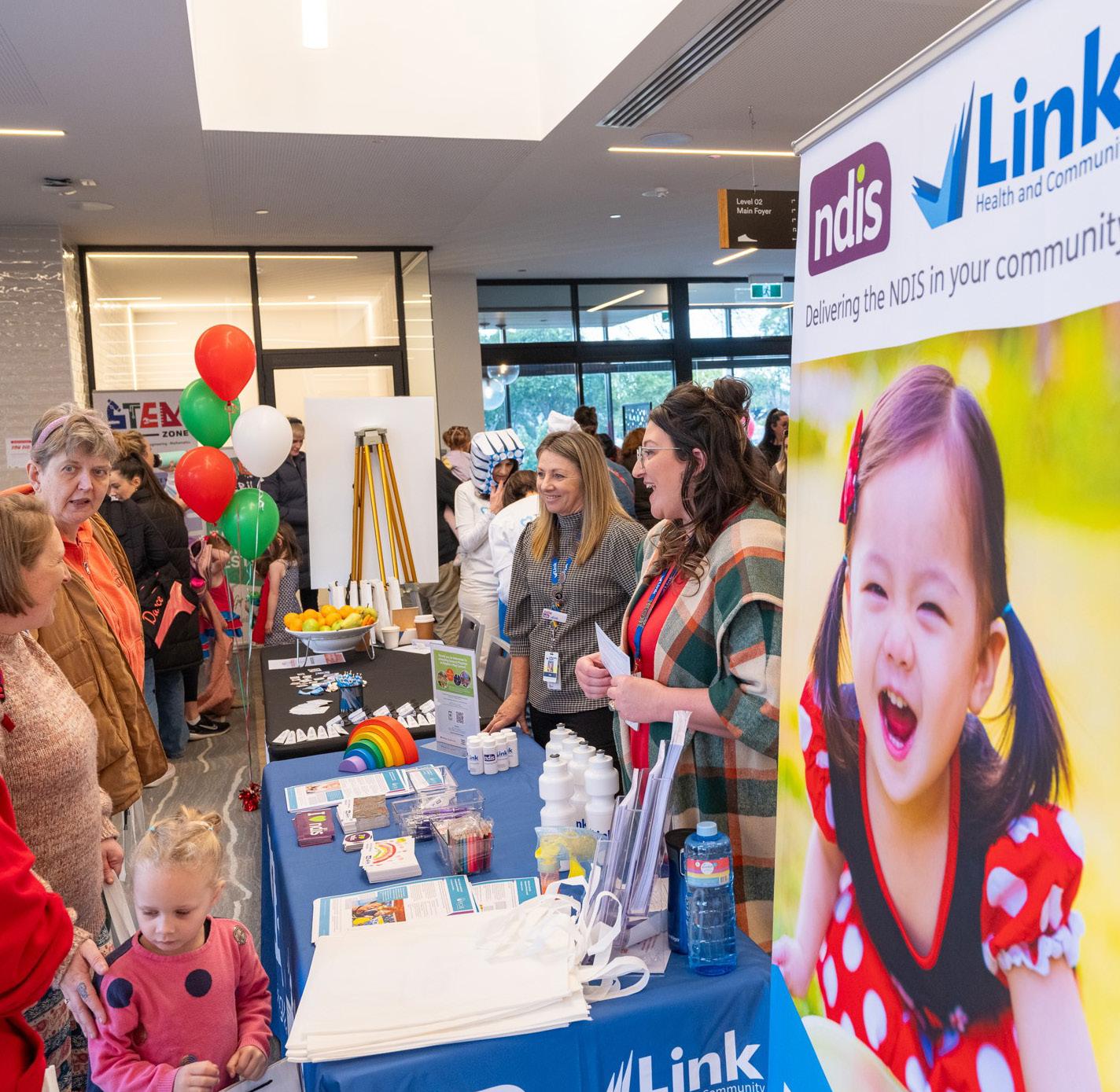



Declan is a purpose-driven leader whose passion for community and proactive approach to social challenges have made her an integral part of Greater Shepparton City Council’s Emergency Management and Resilience team. With a bright, upbeat personality and a natural ability to connect with diverse audiences, Declan has built strong stakeholder relationships and emerged as a mentor among her peers. Her leadership was pivotal in the Resilience in Recovery program, supporting flood-impacted communities following the October 2022 and early 2024 flood events.
Commencing her role just one week before the October 2022 floods, Declan immediately stepped into emergency response, working in the Tatura Emergency Relief Centre. Her commitment to communityled recovery has shaped the program’s strengths-based approach, drawing inspiration from the lived experiences of those most affected. Declan’s ability to meet communities where they are, listen deeply, and respond with empathy has ensured that recovery efforts are inclusive, effective, and grounded in local knowledge.
As the first Community Recovery Coordinator appointed to the program, Declan has led a wide range of initiatives designed to rebuild social cohesion and enhance resilience. From organising community movie nights, comedy events, and youth activities to coordinating Psychological First Aid training and emergency planning sessions, her work has been both strategic and hands-on. Her adaptability, interpersonal skills, and program management expertise have enabled her to deliver meaningful outcomes with lasting impact.
Declan’s leadership continues to foster strong community ties and build social capital in the region’s most flood-affected areas. Her dedication, energy, and commitment to learning have not only strengthened the Resilience in Recovery program but also inspired those around her. Highly regarded by colleagues and community members alike, Declan exemplifies the qualities of a Young Achiever – resilient, compassionate, and driven to make a difference where it matters most.
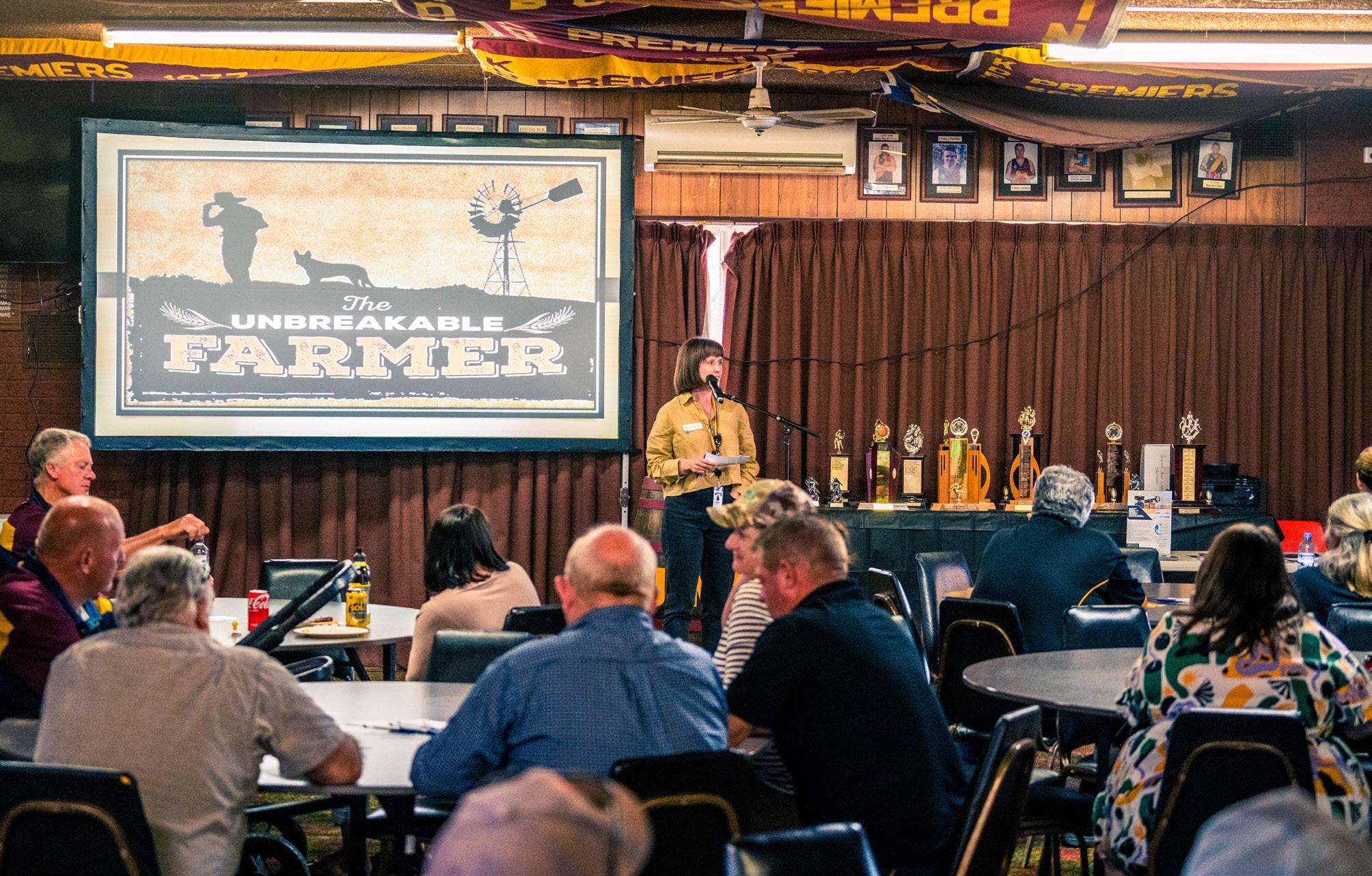


Ezekiel has quickly emerged as a standout contributor in the local government sector, bringing with him a wealth of technical expertise, critical thinking, and a passion for meaningful change. Despite being new to the sector, he has made a significant impact in under two years by leading innovation, fostering collaboration, and building strong regional partnerships across diverse industries. His inquisitive mindset and openness to change have earned him the trust of colleagues, stakeholders, and the broader community.
A key area of Ezekiel’s leadership has been in the integrated water sector, where he has driven a reassessment of Council’s stormwater quality management, flood mitigation, and stakeholder engagement strategies. He led a council-wide overhaul of lifecycle management for Water Sensitive Urban Design assets, improving their performance through a targeted education program and optimised maintenance practices. His work has enhanced asset efficiency while maximising existing budget allocations across departments.
Ezekiel’s innovative thinking led to Council’s first stormwater sensor trial, enabling proactive monitoring of flood-prone areas and more efficient resource deployment. This initiative has already delivered measurable improvements and is poised for expansion. His proactive approach also secured approximately $300,000 in external grant funding – well beyond his formal responsibilities – allowing Council to redirect operating budget to other high-priority initiatives, significantly increasing the organisation’s capacity to deliver Integrated Water Management outcomes.
Among his most notable achievements is the delivery of Council’s first permeable pavement carpark at Dudley Street. By aligning carpark renewal with IWM and urban forest goals, Ezekiel demonstrated how infrastructure projects can deliver multiple community benefits. His collaborative approach and ability to drive systemic change have earned him a reputation as a go-to leader for integrated solutions. Ezekiel’s rapid rise and impact reflect his exceptional capability, adaptability, and commitment to sustainable, community-focused outcomes.


Lisa’s leadership in Glen Eira City Council’s People and Culture Department has been instrumental in transforming the organisation’s approach to talent attraction and retention. Since stepping into her role in 2022, Lisa has led the recruitment function through a period of significant workforce challenges, including the post-pandemic skills shortage. Her strategic mindset and commitment to continuous improvement have resulted in the successful implementation of a new recruitment and onboarding system, streamlined processes, and the development of Glen Eira’s first Attraction and Retention Strategy.
This strategy clearly defines the Council’s unique employee value proposition and outlines targeted initiatives to attract and retain top talent in a competitive market.
Lisa’s proactive and innovative approach has delivered tangible outcomes, including the recruitment of over 200 leisure staff in just three months to support the opening of a new facility. She independently led a complex procurement tender process, overseeing the evaluation, contract negotiation, and change management required to implement a new system.
Her efforts have significantly reduced time-to-hire and improved the candidate experience. Lisa’s ability to lead with empathy, collaborate across departments, and deliver strategic outcomes has elevated Glen Eira’s recruitment practices and positioned the Council as an employer of choice in the local government sector.


Kiara Noonan
Kiara has been a driving force in emergency management at Macedon Ranges Shire Council for nearly a decade, transforming the council’s approach to disaster preparedness, response, and recovery.
Her leadership has been instrumental in rebuilding the council’s emergency response workforce, designing a recruitment and mentoring program that ensures a sustainable, well-trained team. From leading the Recovery and Resilience Marquee Project to deploying Starlink connectivity in remote areas, Kiara has consistently delivered innovative, community-focused solutions that enhance resilience and keep residents connected during crises.

Beyond her formal role, Kiara’s influence extends across the emergency management sector. As one of only seven recipients of the prestigious Australian Women in Emergencies Philippa Woolf Scholarship, she has used her platform to mentor women in the field and build sector-wide partnerships.
Her commitment to public service is further reflected in her decadelong CFA volunteer work and 25 years mentoring young athletes in calisthenics. Kiara’s passion, innovation, and dedication to community resilience have significantly strengthened her council’s emergency capabilities and inspired others across the sector. Her leadership continues to make a lasting impact.


Irshad is a dependable and detail-oriented civil engineer whose calm, solutions-focused approach has made a lasting impact at Casey. Since joining the council in 2019 as an entry-level engineer, Irshad has rapidly progressed to Lead Development Engineer, often acting as Team Leader.
His innovative thinking and subtle problem-solving have improved internal processes and stakeholder engagement, particularly through his leadership on the Cranbourne Hospital project. There, he developed a stormwater strategy that addressed complex drainage issues within a tight budget, while also revitalising key partnerships through effective communication and collaboration.

Irshad’s influence extends beyond technical delivery. He has played a key role in strengthening relationships with developers and stakeholders through his proactive management of Memorandums of Understanding, leading to more efficient decision-making and smoother project execution. His contributions have been recognised with the council’s Staff Achievement Award for Innovation in both 2022 and 2023. Selected for the council’s in-house Emerging Leaders Program, Irshad is currently undertaking a Diploma of Leadership and Management. His commitment to continuous improvement, mentorship, and collaboration has fostered a culture of trust and excellence, ensuring the successful delivery of projects that align with the council’s goals and benefit the broader community.



Since joining Gannawarra Shire Council in June 2024, Dylan Taylor has rapidly emerged as a standout young achiever in local government. Starting as a Casual Administration Officer, Dylan’s initiative and commitment quickly earned him a full-time Governance Officer role. In this short time, he has led significant improvements in governance, digital transformation, and operational efficiency.
Dylan played a key role in coordinating the 2024 local government elections and led the development of a comprehensive Councillor induction program, ensuring new Councillors were well-prepared for their roles. His leadership in digitising governance operations – particularly through the development of SharePoint sites for Councillors and the Audit and Risk Committee – has improved transparency, accessibility, and internal workflows.
Dylan’s influence extends beyond governance. He manages Council’s insurance claims, leases, and licenses, introducing structured processes that enhance compliance and stakeholder engagement. His ability to navigate complex public liability cases and streamline lease management has strengthened Council’s operational effectiveness.
Dylan’s work has received strong praise from Councillors and colleagues alike, particularly for his user-friendly digital solutions. He is now applying these principles to an Occupational Health and Safety SharePoint site, further advancing Council’s digital capabilities. Dylan’s adaptability, leadership, and commitment to innovation have already made a lasting impact – and he’s only just getting started.



The Executive Leadership Program is designed exclusively to equip and support senior executives in Local Government, particularly Chief Executive Officers and Directors, to expand and develop their skills and knowledge to assist them in becoming confident and capable leaders in the sector.
Agata Chmielewski Whittlesea City Council
Antonietta (Toni) Toaldo Banyule City Council
Brooke Holmes Hepburn Shire Council
Damian Prendergast Bass Coast Shire Council
Damian Waight Surf Coast Shire Council
David Fice Greater Dandenong City Council
Georgie Hill Brimbank City Council
Greg Rodwell Merri-bek City Council
Jess Howard Greater Bendigo City Council
Jo Bradshaw Campaspe Shire Council
Jodie McNamara Moyne Shire Council
Krishen Soobrayen Manningham City Council
Lauren Bialkower Port Phillip City Council
Ros Pruden Bayside City Council
Marion Greig Casey City Council
Michelle Stedman Loddon Shire Council
Nathan Upson Frankston City Council
Patrick Jess Maribyrnong City Council
Paul Marsden Kingston City Council
John Vastianos
Glen Eira City Council
Rachael Frampton Strathbogie Shire Council
Ram Upadhyaya Hindmarsh Shire Council
Sally Rice Indigo Shire Council
Tony Peterson South Gippsland Shire Council



Aaron Moyne Glenelg Shire Council
Angela Hays Melton City Council
Cheryl Casey Mornington Peninsula Shire Council
David Power Hobsons Bay City Council
Emma Appleton Whittlesea City Council
James Rouse Latrobe City Council
John Brockway Warrnambool City Council
Julie Landy Mount Alexander Shire Council
Kate Heissenbuttel Monash City Council
Kate Waters Kingston City Council
Matt Wilson Ballarat City Council
Maria Weiss Macedon Ranges Shire Council
Michael Sharp Campaspe Shire Council
Michelle Jorgensen South Gippsland Shire Council
Nathan Islip Yarra Ranges Council
Paul Wood Port Phillip City Council
Petra Croot Hindmarsh Shire Council
Rory Neeson Southern Grampians Shire Council
Scott Williams Moira Shire Council
Sharyn Cox Moonee Valley City Council
Tania Asper Casey City Council
Tennille Bradley Greater Geelong City Council
Trenton Fithall
Northern Grampians Shire Council
Vicky Guglielmo Yarra City Council
Vishal Gupta Frankston City Council



The Emerging Leaders Program provides a year of unique leadership-focused activities and experiences designed to develop and inspire emerging leaders or those aspiring to positions of leadership in the sector.
Amey Rountree Monash City Council
Ben Piscioneri
Mildura Rural City Council
Caroline Moore
Bass Coast Shire Council
Claire Brace Casey City Council
Daniel Nichols
Latrobe City Council
Desirae Kilduff Merri-bek City Council
Emma Lindsay Mornington Peninsula Shire Council
Jaime Edge Whitehorse City Council
Jonathan Leung Glen Eira City Council
Kate McKernan Strathbogie Shire Council
Katerina Antoniou Kingston City Council
Lana Horn Baw Baw Shire Council
2024 ELP Program proudly sponsored by
Liam Wilkinson Whittlesea City Council
Linda Ross Cardinia Shire Council
Mark Nido Knox City Council
Patricia Stewart Port Phillip City Council
Rebecca Golia Wangaratta Rural City Council
Rebecca Tipper Yarra City Council
Sam Hattam Hepburn Shire Council
Tiani Willison Mitchell Shire Council
Tyrone Downie
Greater Bendigo City Council
Yohana Jury
Greater Dandenong City Council
Kylie Tatt Macedon Ranges Shire Council

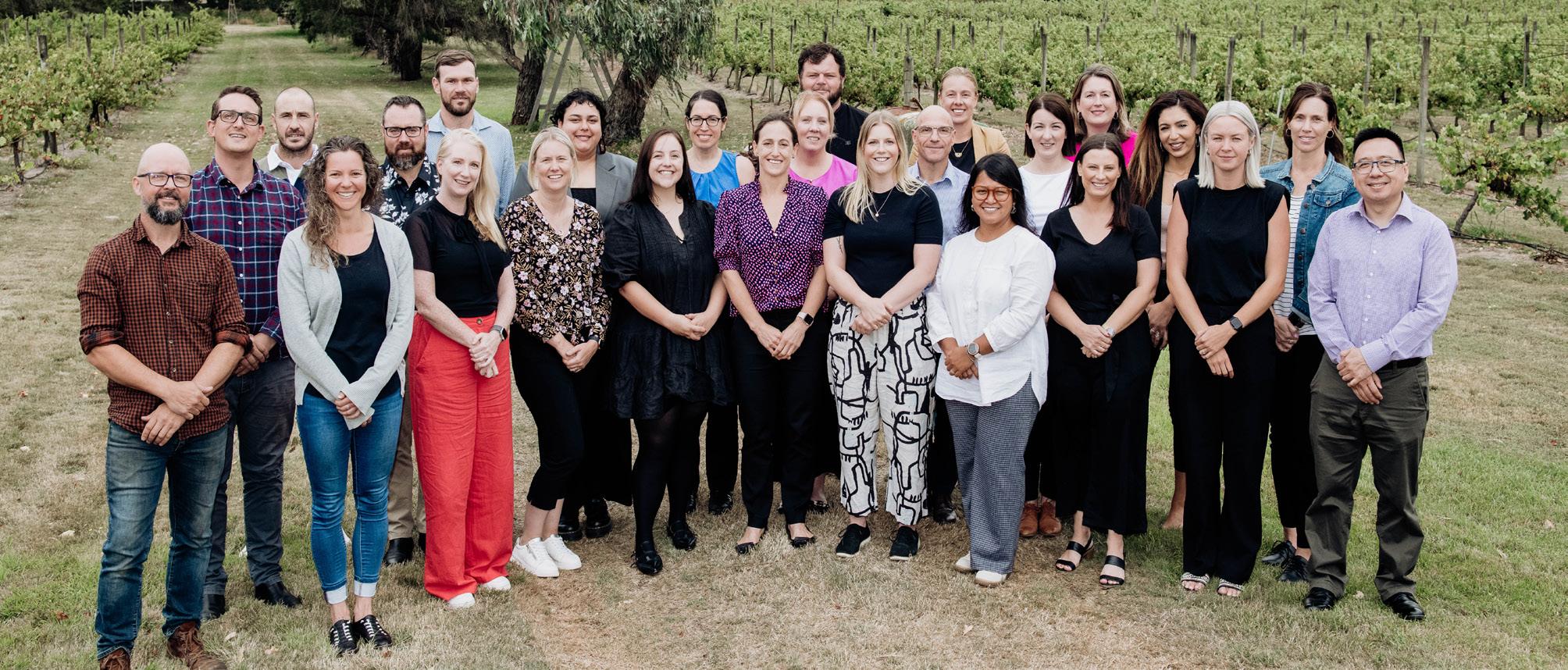


Kristen Munro Banyule City Council
Alex Stewart Nillumbik Shire Council
Alison Treloar Bass Coast Shire Council
Amy Luck Whitehorse City Council
Awais Sadiq Swan Hill Rural City Council
Brian Doyle Strathbogie Shire Council
Bridgette O'Brien Hepburn Shire Council
Bruce Marshall Maribyrnong City Council
Carrie Lindsay Manningham City Council
Courtney Harrison Casey City Council
Ella Edwards Whittlesea City Council
Holly Sawyer Wangaratta Rural City Council
Janak Bharati Greater Dandenong City Council
Kealey Lush Mildura Rural City Council
Kim Marshall Kingston City Council
Kirsty Phillips Greater Bendigo City Council
Laura Crilly Mornington Peninsula Shire
Liz Chapman Brimbank City Council
Luciana Andriani Port Phillip City Council
Numair Farooq Mitchell Shire Council
Rae Power Frankston City Council
Reece Carroll Loddon Shire Council
Rhys Matulis South Gippsland Shire Council
Tania Triantafilopoulos
Knox City Council
Tom Meek Yarra Ranges Council


Proceeds from all LGPro activities are used exclusively to provide services and programs that benefit our members and the Local Government sector as a whole.

The publication is produced by: Local Government Professionals Inc Level 3/58 Lorimer Street Docklands VIC 3008 Tel: (03) 9268 6400 Fax: (03) 9646 0469 info@lgpro.com www.lgpro.com
Credits Editor: Matthew Lentini Graphic Design: Antonia Woolrich (ADW Design Australia)